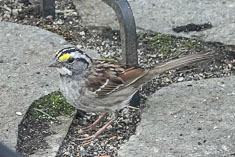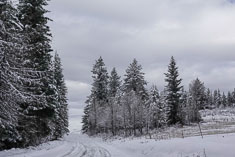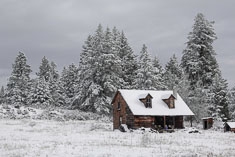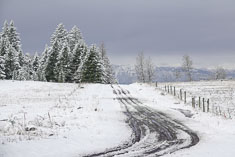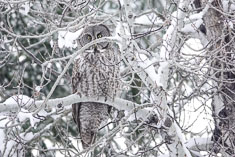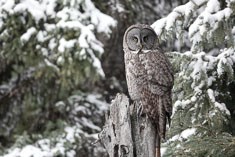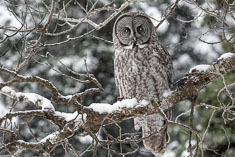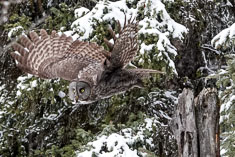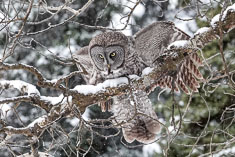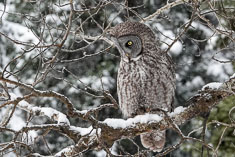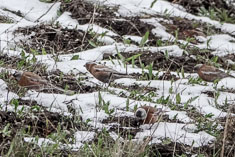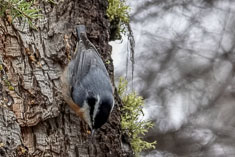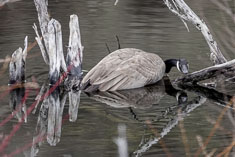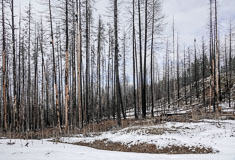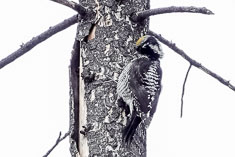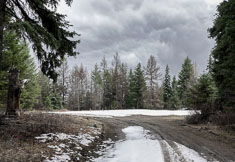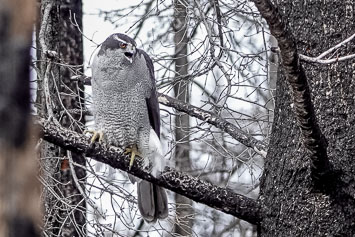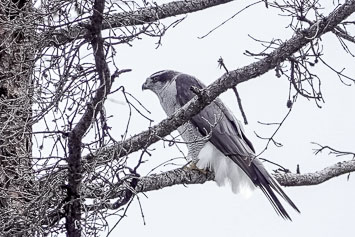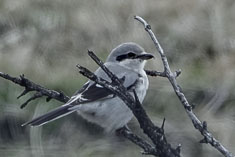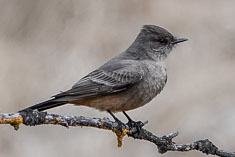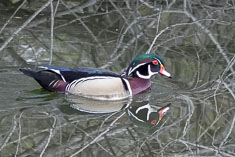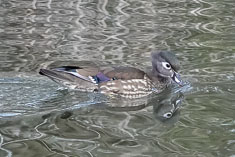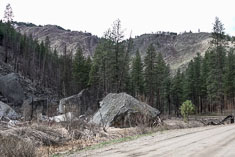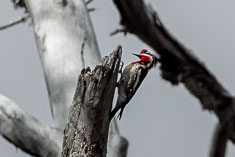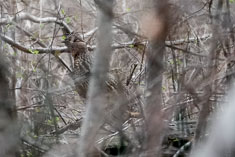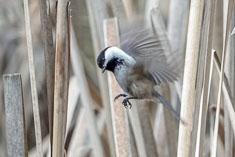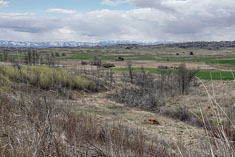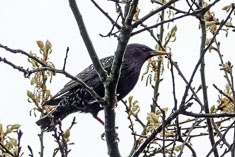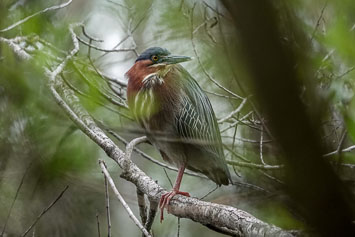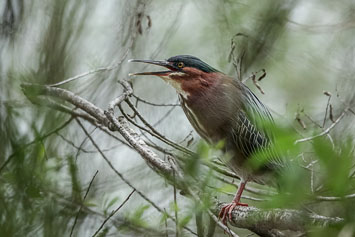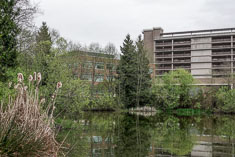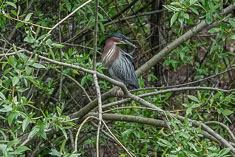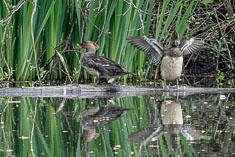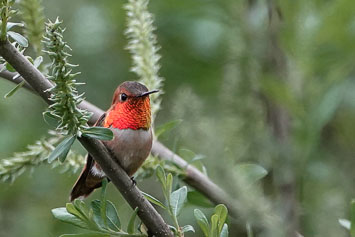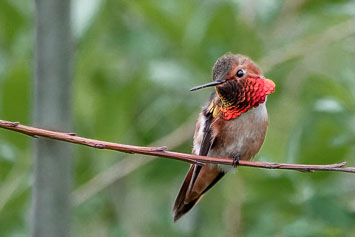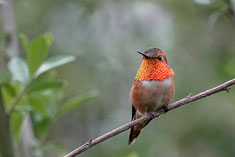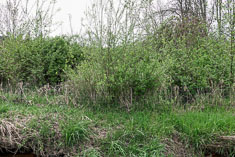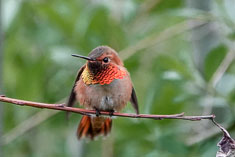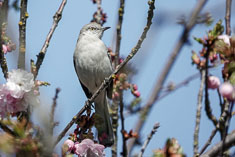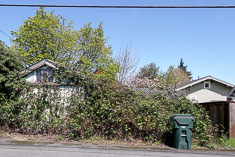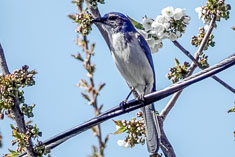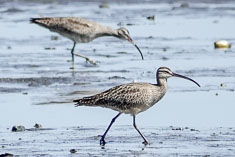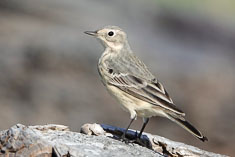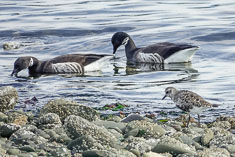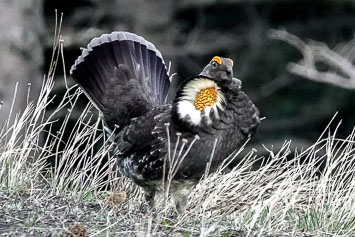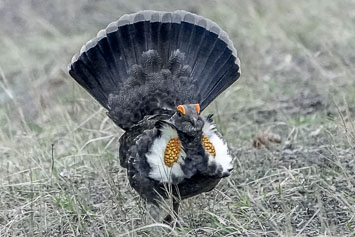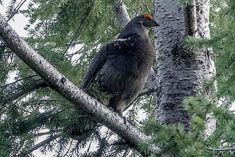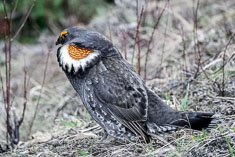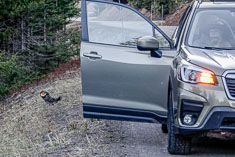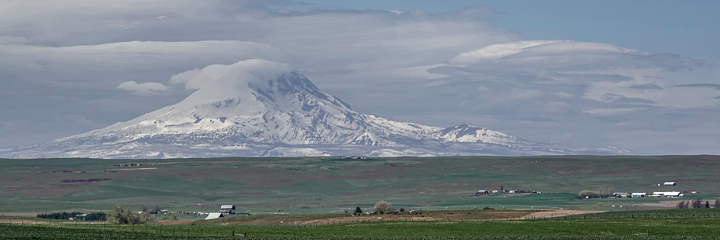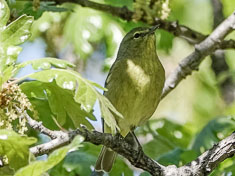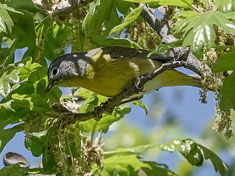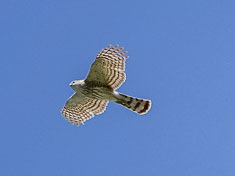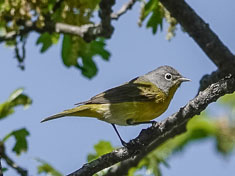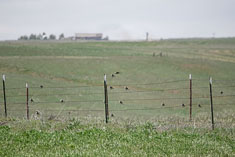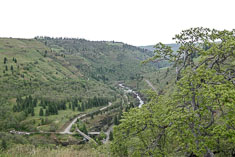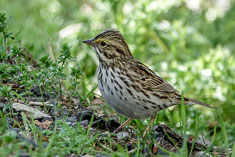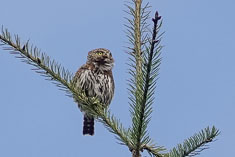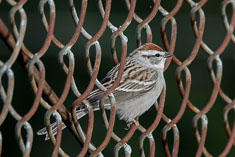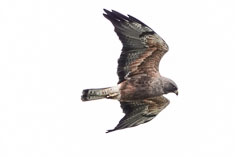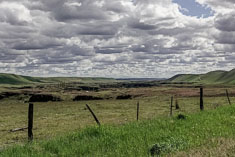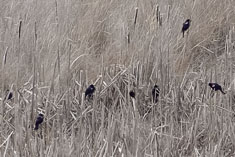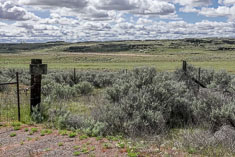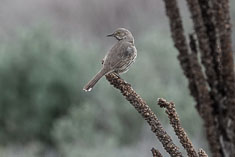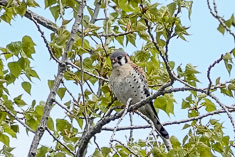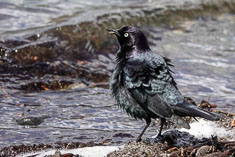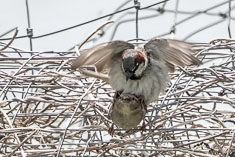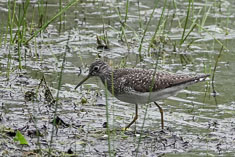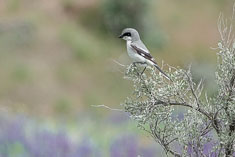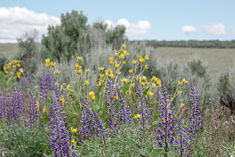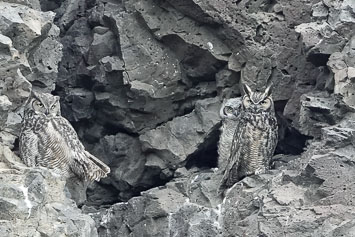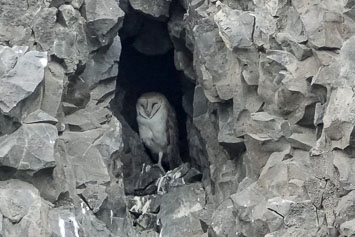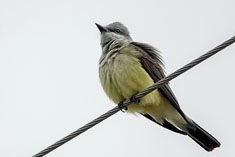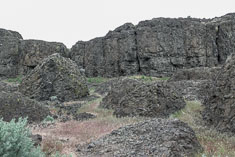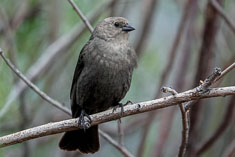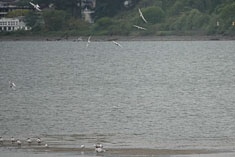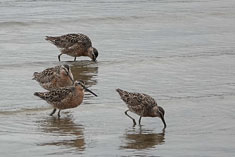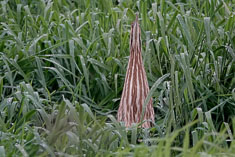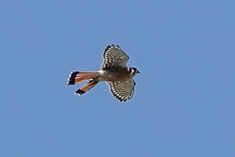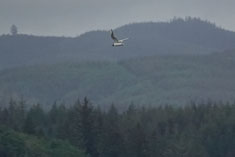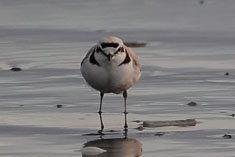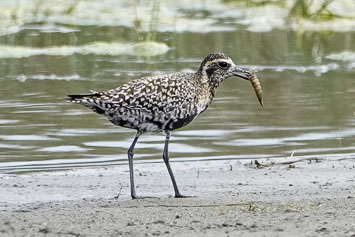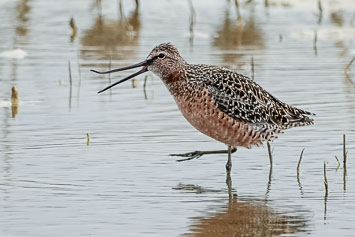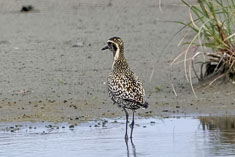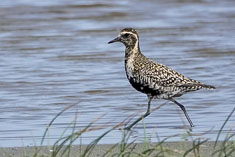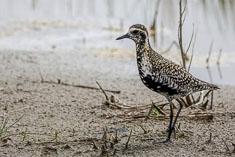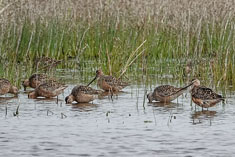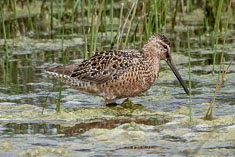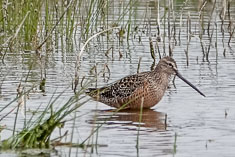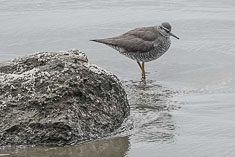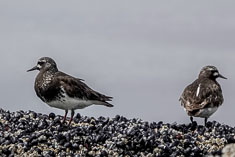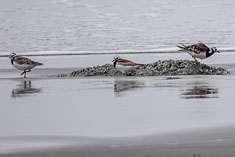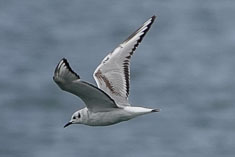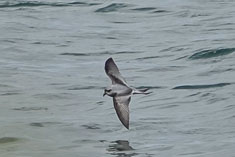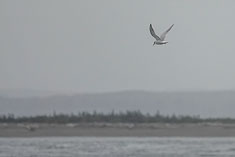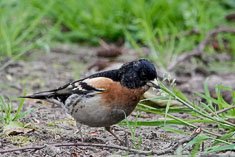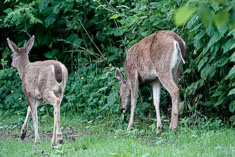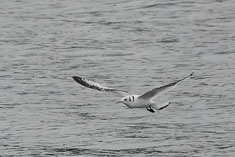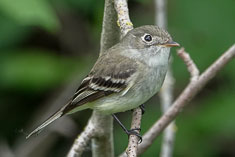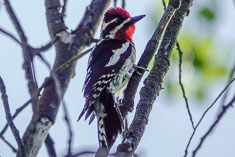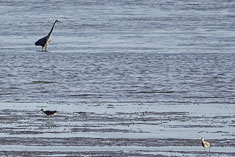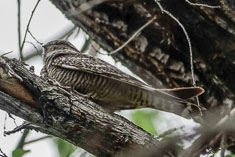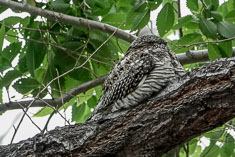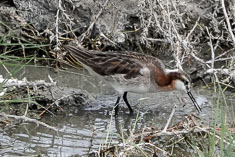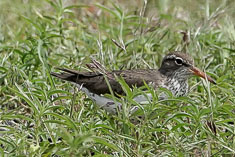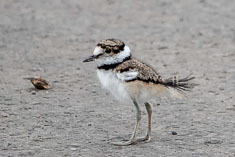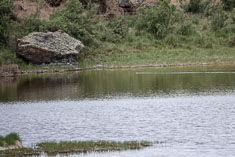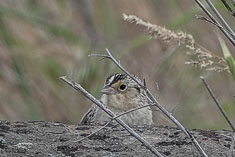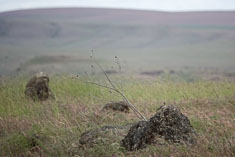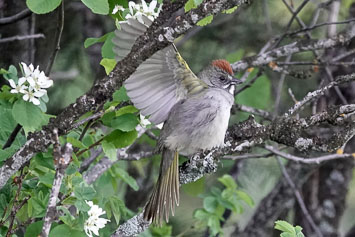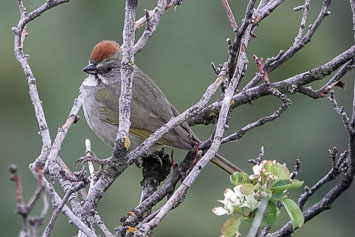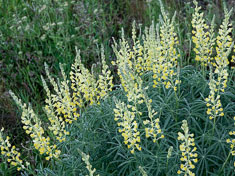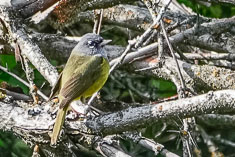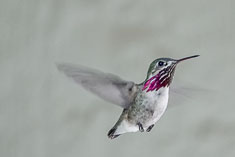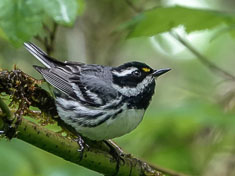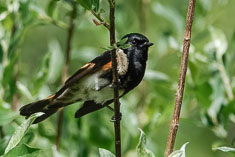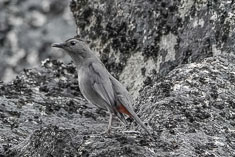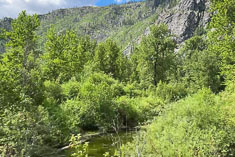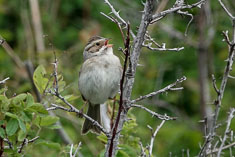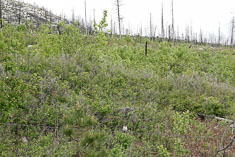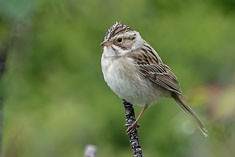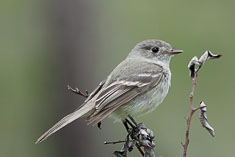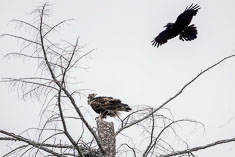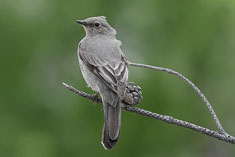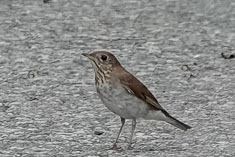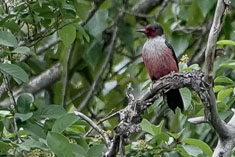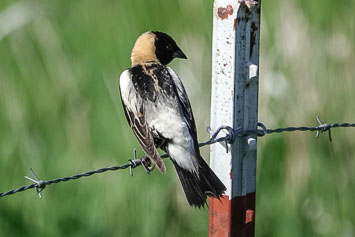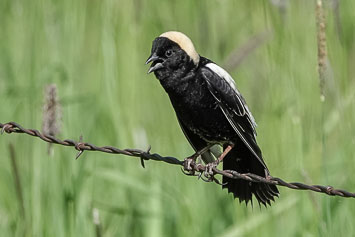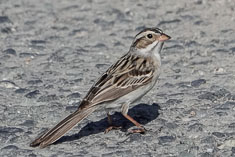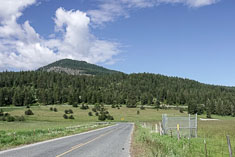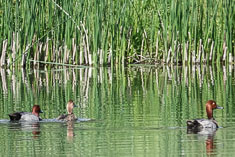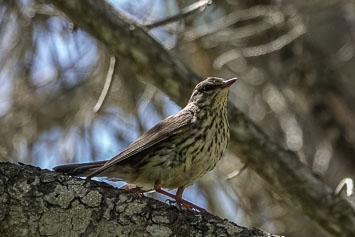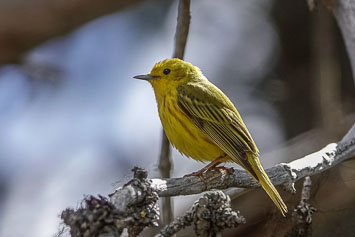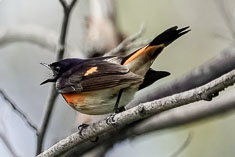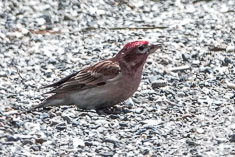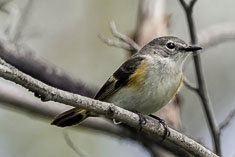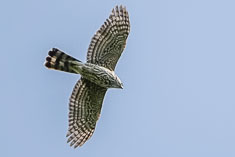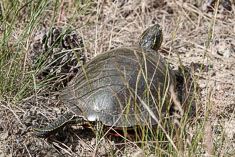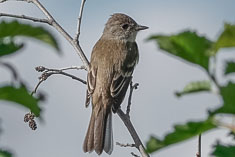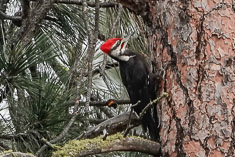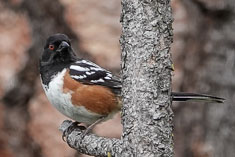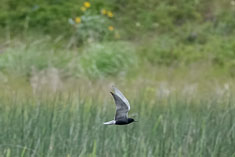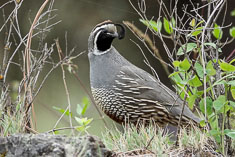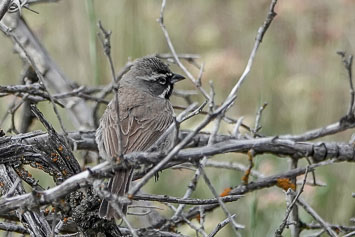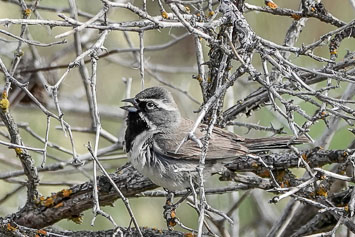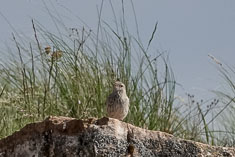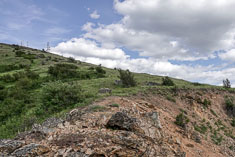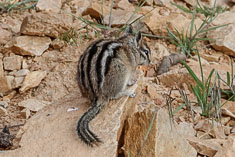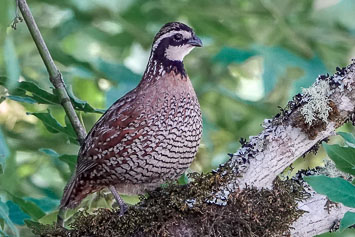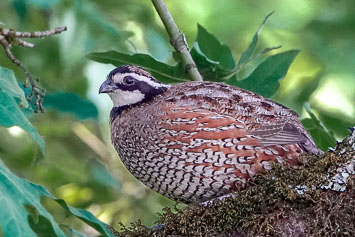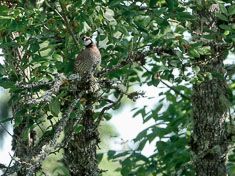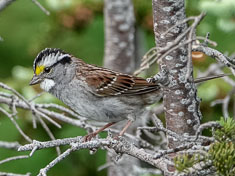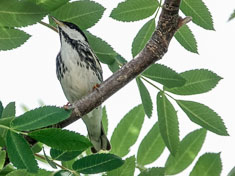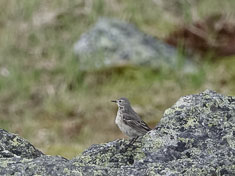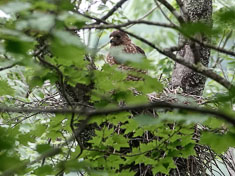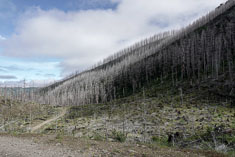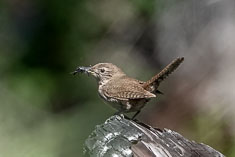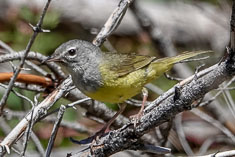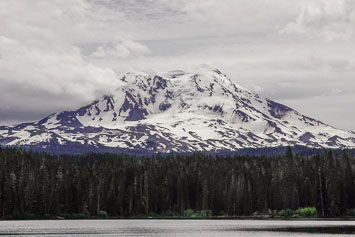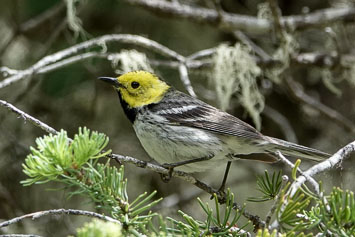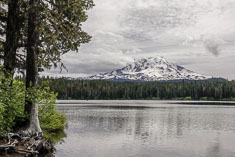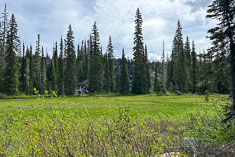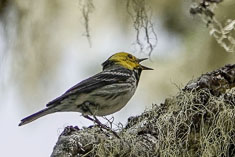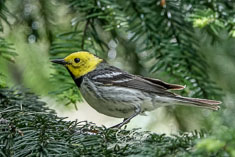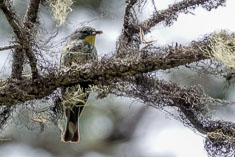4/03/2024 Home (link to here)
I remembered a dream last night for the first time in months. In it I killed a rat, a subject on my mind perhaps due to our recent efforts to capture and kill the rats attracted to our backyard by our bird feeders. We've caught two little ones so far, in the same trap at the same time; perhaps it took their combined weight to trip the trap.
Also at the feeders L+ today, a White-throated Sparrow. I believe it is a different bird from the one which spent the winter in our back yard and which we last saw two weeks ago. Thanks to bold white crown stripes and bright yellow lores this new bird really pops, leaving no doubt as to its identity even on a rainy day.
I remembered a dream last night for the first time in months. In it I killed a rat, a subject on my mind perhaps due to our recent efforts to capture and kill the rats attracted to our backyard by our bird feeders. We've caught two little ones so far, in the same trap at the same time; perhaps it took their combined weight to trip the trap.
Also at the feeders L+ today, a White-throated Sparrow. I believe it is a different bird from the one which spent the winter in our back yard and which we last saw two weeks ago. Thanks to bold white crown stripes and bright yellow lores this new bird really pops, leaving no doubt as to its identity even on a rainy day.
4/06/2024 Okanogan Highlands (link to here)
Recent reports of a Great Gray Owl inspired us to revisit the Okanogan Highlands this weekend. Shep T and company apparently saw two along Davies Road in the meadow at the north of end of Teal Lake so we drove up there yesterday afternoon. We did not see any owls but the weather was unfavorable, foggy and snowing pretty hard, and we did not see many birds at all except at the farm by Teas Road L+.
We spent the night at the Junction Motel in Tonasket where you get ninety-dollar quality for $122. The carpet was shabby and the furnishings tired but the heat worked and you can't beat the location for birding the highlands. Someone else might not have noticed the unusually tall bed but I worried about it all through supper. Fortunately Darchelle managed the risky transfer from the wheelchair without incident.
We dedicated the day to a 90 mile loop M+ through the highlands. The fog had retreated to the
mountain summits and fresh snow traced the landscape in white but made the higher elevation roads a
messy mix of snow and mud. Davies Road, reaching 4500' near the old homestead (Vacation home?) at
mile 3.5, is one of the highest and the snow looked dangerously deep in places but gave us little
trouble. Our tires silenced by the snow, we crept quietly along Teal Lake peering into the dark
woods and scanning the snowy meadows but did not find Shep's owls.
Somewhere along Davies Road we (actually Darchelle) did discover an owl but it was not one of Shep's. To our disappointment it was not even a Great Gray Owl, but a Great Horned, roosting in a big Douglas Fir well back from the road. I don't know how Darchelle managed to spot it.
The hour being still reasonably early, we decided to return to Teal Lake to try again for Shep's owls but stopped to listen near a small meadow along the way. To our surprise, we heard the deep soft hoots of a Great Gray Owl. That never happens! The owl called twice then went silent. Darchelle was about to head into the woods to look for it when a large gray bird with very long wings flew over from the far side of the meadow to perch in an aspen right by the road.
It appeared to be hunting. When Darchelle carefully got out of the car to try for better photos,
the owl looked cross-eyed at her for a few moments then began studying the snow-covered ground
beneath its tree, perhaps listening for mice. About ten minutes later, apparently having concluded
that no prey
was present, the owl silently flew off. Neither of us saw where it had gone so we assumed
that it had flown back into the woods.
After taking a few landscape photos (habitat shots, we call them), perusing Darchelle's photos and marveling together over our good fortune with the owl, we were just pulling out when I noticed it perched in plain sight on a stump at the corner of the meadow. It had probably been there less than 100 feet from us ever since it had flown away 22 minutes earlier. Darchelle jumped out of the car, took another couple hundred photos and got back into the car shortly before the owl flew again, this time to alight on another aspen branch not even 20 feet from Darchelle's open window. This was our best photo op yet, fully justifying the additional photos (more than 200 again) that Darchelle took whenever the owl deigned to glance in her direction.
After keeping us company for another 18 minutes or so, the owl flew over to the far side of the meadow and dropped into the snow behind a tangle of branches. We could no longer see it clearly at that point so we could not tell if it was carrying anything when it flew up again. While we had indeed been fortunate to see it, only our seventh sighting in the past nine years, we were not just lucky. In addition to researching Shep's report, we had consulted owl expert Khanh Tran, a part-time bird guide from Portland OR, who had reassured us that the owls were out there and that the best time to see them would be within two hours of sunrise. We are not early birders so had it not been for his advice, we might well have missed our owl appointment.
Continuing down Davies Road we flushed a flock of Gray-crowned Rosy-Finches in which Darchelle's photos
revealed both Gray-crowned and Hepburn's races. The Rosy-Finches and a Rough-legged Hawk were the only
winter highland specialties we came across all morning despite the wintry appearance of the landscape.
We turned left on Fields Road then right on Mary Ann Creek Road L+, where we found half a dozen summer birds already among the
year-round residents.
From Chesaw we decided to return to Tonasket via Wauconda so we could run up Bunch Road L+ to the height of land M+ where we had an American Three-toed Woodpecker two years ago. It was a rough run. Deep muddy ruts and potholes which might better described as sinkholes nearly convinced us turn around before we even reached the upper section of the road, which was littered with tree limbs and paved with frozen snow, but we made it. Up on top we played Three-toed Woodpecker calls and the bird flew in to perch high on a tall snag. Darchelle was heading out to scout around but was fortunately still close enough to the car to hear me call out to her and point out our tenth (out of twelve in the state) woodpecker of the year. I was grateful that Darchelle got a photo because the bird was sufficiently distant that I would not have been sure of the ID otherwise.
Although we had considered the possibility of a Goshawk showing up in that area, we did not at first recognize the harsh "tier tier tier" calls we heard from back in the burn while we updating our checklist. It occurred to us both at the same time, "That's a Goshawk!" The bird flew in while Darchelle was playing a Pygmy Owl recording on her phone, hoping to call in a few little birds to add to our list. When it perched in a nearby snag she had her first ever good look at an adult American Goshawk, It is not an easy bird to find in the state. While we typically run across two or three a year, most are juveniles and our views of adults have been fleeting at best. This individual stayed in view for several minutes, glaring down at Darchelle and occasionally screaming at her as she photographed it. I unfortunately did not see it until it flew low over the car and disappeared back into the burn but onces again, Darchelle's photos allowed me to get a good look at the bird too.
For a mile or two at its lower end, Bunch Road follows an ephemeral stream down through rolling meadows where warblers nest in the willows and Golden Eagles patrol for Ground Squirrels. The warblers won't show up for another month but Say's Phobes were already chasing gnats over a little sedge marsh while a nearby Northern Shrike rested up for the long trip north to its subarctic breeding grounds.
As varied as our sightings were today, none of the birds we saw were new for us for Okanogan County. For that we had to drive down to Omak where a pair of Wood Ducks had been reported on an oxbow slough on the south side of town L+. When we realized the slough could be seen well only from a gravel road along the top of a dike, we turned onto it. The two Wood Ducks were our third sighting this year and each time we've seen them, they have been a new county bird for us. They are spectacular but surprisingly easy to overlook unless you are looking for them.
We spent the night at the Omak Inn, an old favorite, and were not disappointed. Also not disappointing were the Chile Rellenos from the new Mexcan restaurant next door, El Torito Bar & Grill. They were among the best I've had anywhere in the state - nice and light with a perfect balance of cheese, chile and egg in a delicious sauce. I even posted a review about them.
Recent reports of a Great Gray Owl inspired us to revisit the Okanogan Highlands this weekend. Shep T and company apparently saw two along Davies Road in the meadow at the north of end of Teal Lake so we drove up there yesterday afternoon. We did not see any owls but the weather was unfavorable, foggy and snowing pretty hard, and we did not see many birds at all except at the farm by Teas Road L+.
We spent the night at the Junction Motel in Tonasket where you get ninety-dollar quality for $122. The carpet was shabby and the furnishings tired but the heat worked and you can't beat the location for birding the highlands. Someone else might not have noticed the unusually tall bed but I worried about it all through supper. Fortunately Darchelle managed the risky transfer from the wheelchair without incident.
Somewhere along Davies Road we (actually Darchelle) did discover an owl but it was not one of Shep's. To our disappointment it was not even a Great Gray Owl, but a Great Horned, roosting in a big Douglas Fir well back from the road. I don't know how Darchelle managed to spot it.
The hour being still reasonably early, we decided to return to Teal Lake to try again for Shep's owls but stopped to listen near a small meadow along the way. To our surprise, we heard the deep soft hoots of a Great Gray Owl. That never happens! The owl called twice then went silent. Darchelle was about to head into the woods to look for it when a large gray bird with very long wings flew over from the far side of the meadow to perch in an aspen right by the road.
After taking a few landscape photos (habitat shots, we call them), perusing Darchelle's photos and marveling together over our good fortune with the owl, we were just pulling out when I noticed it perched in plain sight on a stump at the corner of the meadow. It had probably been there less than 100 feet from us ever since it had flown away 22 minutes earlier. Darchelle jumped out of the car, took another couple hundred photos and got back into the car shortly before the owl flew again, this time to alight on another aspen branch not even 20 feet from Darchelle's open window. This was our best photo op yet, fully justifying the additional photos (more than 200 again) that Darchelle took whenever the owl deigned to glance in her direction.
After keeping us company for another 18 minutes or so, the owl flew over to the far side of the meadow and dropped into the snow behind a tangle of branches. We could no longer see it clearly at that point so we could not tell if it was carrying anything when it flew up again. While we had indeed been fortunate to see it, only our seventh sighting in the past nine years, we were not just lucky. In addition to researching Shep's report, we had consulted owl expert Khanh Tran, a part-time bird guide from Portland OR, who had reassured us that the owls were out there and that the best time to see them would be within two hours of sunrise. We are not early birders so had it not been for his advice, we might well have missed our owl appointment.
From Chesaw we decided to return to Tonasket via Wauconda so we could run up Bunch Road L+ to the height of land M+ where we had an American Three-toed Woodpecker two years ago. It was a rough run. Deep muddy ruts and potholes which might better described as sinkholes nearly convinced us turn around before we even reached the upper section of the road, which was littered with tree limbs and paved with frozen snow, but we made it. Up on top we played Three-toed Woodpecker calls and the bird flew in to perch high on a tall snag. Darchelle was heading out to scout around but was fortunately still close enough to the car to hear me call out to her and point out our tenth (out of twelve in the state) woodpecker of the year. I was grateful that Darchelle got a photo because the bird was sufficiently distant that I would not have been sure of the ID otherwise.
Although we had considered the possibility of a Goshawk showing up in that area, we did not at first recognize the harsh "tier tier tier" calls we heard from back in the burn while we updating our checklist. It occurred to us both at the same time, "That's a Goshawk!" The bird flew in while Darchelle was playing a Pygmy Owl recording on her phone, hoping to call in a few little birds to add to our list. When it perched in a nearby snag she had her first ever good look at an adult American Goshawk, It is not an easy bird to find in the state. While we typically run across two or three a year, most are juveniles and our views of adults have been fleeting at best. This individual stayed in view for several minutes, glaring down at Darchelle and occasionally screaming at her as she photographed it. I unfortunately did not see it until it flew low over the car and disappeared back into the burn but onces again, Darchelle's photos allowed me to get a good look at the bird too.
For a mile or two at its lower end, Bunch Road follows an ephemeral stream down through rolling meadows where warblers nest in the willows and Golden Eagles patrol for Ground Squirrels. The warblers won't show up for another month but Say's Phobes were already chasing gnats over a little sedge marsh while a nearby Northern Shrike rested up for the long trip north to its subarctic breeding grounds.
As varied as our sightings were today, none of the birds we saw were new for us for Okanogan County. For that we had to drive down to Omak where a pair of Wood Ducks had been reported on an oxbow slough on the south side of town L+. When we realized the slough could be seen well only from a gravel road along the top of a dike, we turned onto it. The two Wood Ducks were our third sighting this year and each time we've seen them, they have been a new county bird for us. They are spectacular but surprisingly easy to overlook unless you are looking for them.
We spent the night at the Omak Inn, an old favorite, and were not disappointed. Also not disappointing were the Chile Rellenos from the new Mexcan restaurant next door, El Torito Bar & Grill. They were among the best I've had anywhere in the state - nice and light with a perfect balance of cheese, chile and egg in a delicious sauce. I even posted a review about them.
4/07/2024 Okanogan (link to here)
Last winter after several unsuccessful attempts we vowed not to devote any more daylight to
searching for Ruffed Grouse, but winter is officially over and the grouse are drumming, making them
much (for most people) easier to find. Not so much easier for me unfortunately; particularly from
inside the car, I have a difficult time hearing low-pitched sounds. Today for example, up along
Salmon Creek Rd L+
near Conconully I for the first time in my life actually watched a
Ruffed Grouse drumming,
and from a distance of about 80 feet I heard nothing at all. It was very cool to finally see it
though. It had taken Darchelle about half an hour to track it down after she first heard it, and
another ten minutes to position the car in precisely the right position to enable me to spot it.
I would have given up but I'm grateful that she did not.
Among other treats along Salmon Creek Road were Black-capped Chickadees plucking fluff from last year's cattail heads and our first-of-year Red-naped Sapsuckers, then down the valley a few miles, a very large flock of Gray-crowned Rosy-Finches.
We followed Salmon Creek Road into Okanogan, crossed US 97 and drove Cameron Lake Rd L+ to Brewster. Lots of ducks, few raptors and no finches. On our way home we sampled sagebrush stands in search of an early Brewer's Sparrow but were unable confirm any of the several candidates we called up.
On our way back to Seattle we learned that we had a visitor waiting for us at home. Our next-door neighbor had reported to Monica that she had seen a Starling fluttering against the inside of our attic window. The Starling had apparently gone to bed by the time we got home but the morning Darchelle looked for it again and found it. She was able to capture it in a towel and carried it outside to release it. Despite being trapped inside for almost 48 hours, it appeared to be okay. Perhaps it managed to find a few spiders to snack on.
Among other treats along Salmon Creek Road were Black-capped Chickadees plucking fluff from last year's cattail heads and our first-of-year Red-naped Sapsuckers, then down the valley a few miles, a very large flock of Gray-crowned Rosy-Finches.
We followed Salmon Creek Road into Okanogan, crossed US 97 and drove Cameron Lake Rd L+ to Brewster. Lots of ducks, few raptors and no finches. On our way home we sampled sagebrush stands in search of an early Brewer's Sparrow but were unable confirm any of the several candidates we called up.
On our way back to Seattle we learned that we had a visitor waiting for us at home. Our next-door neighbor had reported to Monica that she had seen a Starling fluttering against the inside of our attic window. The Starling had apparently gone to bed by the time we got home but the morning Darchelle looked for it again and found it. She was able to capture it in a towel and carried it outside to release it. Despite being trapped inside for almost 48 hours, it appeared to be okay. Perhaps it managed to find a few spiders to snack on.
4/11/2024 ALS Clinic (link to here)
The ALS Clinic today felt more like a social engagement event than a doctor visit. We met with four or five teams beginning at about 9AM, each including two or three people whose the faces were familiar but whose names I did not recall. They of course all remembered my name - it was written on the slip of paper tacked to the door - but to be fair, they seemed to remember me as well. I talked until my voice collapsed into a soft guttural growl like it does at home when I dictate too long on the computer. As we were talking together, the speech pathologist Michelle Scheff was evaluating my speech to determine my eligibility under Medicare for a speech generating device. I qualified, not only on the basis of my dysarthria and dysphonia but also by my ability to use the eye-gaze interface. I am optimistic that with practice I could spell out text at least as fast as I can with Dragon. The Tobii Dynavox I-16 + might even allow me to edit photos with Lightroom, though I will believe that when I can eye-gaze at it.
At my weigh-in when we arrived at the clinic, the scale read 184 lbs, 8 pounds higher than a year ago. My apparent weight gain piqued my curiosity so the next morning at home I reviewed my weight history from my clinic visits and had Darchelle weigh the wheelchair (45 + 2.5 for the foot rests) and ventilator (10.5 including the mask) along with my clothing (3). Doing the math, my current weight works out to approximately 123 pounds, about the same as it was five years ago and up about 10 pounds from my lowest readings about three years ago.
In other news we arranged to procure a Hoyer lift (free of charge) from the ALS Association and a backup ventilator (~$220/mo, no volume discount) from Performance Home Medical, thereby addressing two of my most pressing concerns regarding the relatively immediate future. The Hoyer lift might turn out to be portable, which would allow us to continue traveling even after we can no longer handle transfers. At some point the overhead of accommodating my disability may become prohibitive but meanwhile, we will continue to bird.
The ALS Clinic today felt more like a social engagement event than a doctor visit. We met with four or five teams beginning at about 9AM, each including two or three people whose the faces were familiar but whose names I did not recall. They of course all remembered my name - it was written on the slip of paper tacked to the door - but to be fair, they seemed to remember me as well. I talked until my voice collapsed into a soft guttural growl like it does at home when I dictate too long on the computer. As we were talking together, the speech pathologist Michelle Scheff was evaluating my speech to determine my eligibility under Medicare for a speech generating device. I qualified, not only on the basis of my dysarthria and dysphonia but also by my ability to use the eye-gaze interface. I am optimistic that with practice I could spell out text at least as fast as I can with Dragon. The Tobii Dynavox I-16 + might even allow me to edit photos with Lightroom, though I will believe that when I can eye-gaze at it.
At my weigh-in when we arrived at the clinic, the scale read 184 lbs, 8 pounds higher than a year ago. My apparent weight gain piqued my curiosity so the next morning at home I reviewed my weight history from my clinic visits and had Darchelle weigh the wheelchair (45 + 2.5 for the foot rests) and ventilator (10.5 including the mask) along with my clothing (3). Doing the math, my current weight works out to approximately 123 pounds, about the same as it was five years ago and up about 10 pounds from my lowest readings about three years ago.
In other news we arranged to procure a Hoyer lift (free of charge) from the ALS Association and a backup ventilator (~$220/mo, no volume discount) from Performance Home Medical, thereby addressing two of my most pressing concerns regarding the relatively immediate future. The Hoyer lift might turn out to be portable, which would allow us to continue traveling even after we can no longer handle transfers. At some point the overhead of accommodating my disability may become prohibitive but meanwhile, we will continue to bird.
And continue to bird we did, driving out to Issaquah after the ALS Clinic to look a Green Heron at
the Pickering Place
Ponds L+. Green Herons are sufficiently uncommon that most years we devote at least one outing
specifically to see one and once we have seen one, we do not not usually see another. Today was our
third attempt this year but it was worth the effort; we had unusually close views and even heard it
calling - a short gutteral "culp" uttered with the neck fully extended two or three times per minute.
Pickering Place is a shopping mall with several large office buildings and a dozen smaller shops and restaurants built around three small ponds. A paved trail circles all three ponds offering clear views of the water except around the southeast pond which is mostly enclosed by border of dense brush. That is of course where the heron was hanging out. That is also where I remembered them from my last visit back in June of 2018 with Ed and Delia. There were two of them then, which suggests that they nested there, but we only saw one today.
Another bird we had hoped to see today was a Rufous Hummingbird. Although they show up occasionally (like every other year) in our backyard, during spring migration they are more common on the east side. As Ed has observed more than once, they seem to avoid the Seattle-Tacoma urban corridor +, perhaps due to competition from the resident Anna's Hummingbirds.
Looking for a Rufous, we drove over to the nearby Lake Sammamish SP L+ and circulated slowly around the parking lots
paying particular attention to the pink flowers of currant and salmonberry, but the only one we
found was perched in a willow bush as we were leaving the park. It was a very good-looking one
though, so Darchelle took lots of photos.
Pickering Place is a shopping mall with several large office buildings and a dozen smaller shops and restaurants built around three small ponds. A paved trail circles all three ponds offering clear views of the water except around the southeast pond which is mostly enclosed by border of dense brush. That is of course where the heron was hanging out. That is also where I remembered them from my last visit back in June of 2018 with Ed and Delia. There were two of them then, which suggests that they nested there, but we only saw one today.
Another bird we had hoped to see today was a Rufous Hummingbird. Although they show up occasionally (like every other year) in our backyard, during spring migration they are more common on the east side. As Ed has observed more than once, they seem to avoid the Seattle-Tacoma urban corridor +, perhaps due to competition from the resident Anna's Hummingbirds.
4/13/2024 Port Angeles (link to here)
Since we did not have an overnight trip planned this weekend, we decided to chase the Northern Mockingbird recently reported behind a bank near downtown Port Angeles. It would be a new bird for Clallam County and only my sixth Mockingbird for the state in the past 12 years, assuming we could find it. The Mockingbird is a common roadside bird from New Mexico to Massachusetts so it is hard to get excited about it but to put it in perspective, I have seen just as many Gyrfalcons in Washington as I have Mockingbirds, though we have probably devoted more effort to finding the falcons. I would have had no reservations about driving out to the peninsula for a Gyrfalcon, but just for a Mockingbird?
It wouldn't have to be just for the Mockingbird though. The northbound shorebird migration is begining. A few Whimbrels have arrived at Dungeness Landing in Sequim and a Pacific Golden-Plover has been seen with the Black-bellied Plovers on Ediz Hook. Additional birds which we have never seen in Clallam County might also be possible, such as the California Scrub-Jay in Port Angeles and the Mountain Bluebirds in Sequim.
We did not catch the early ferry. We stayed up too late then took time to make coffee
in the morning. In my opinion the 8:50 ferry with good coffee is preferable to the 6:30 without.
Darchelle found the bluebird and I found the Whimbrels, though it took two tries. On our way out we also picked up our new bird for Jefferson County, a Turkey Vulture. (One of our birding goals for the year is to add a new bird to our county lists for all 39 counties.) In Port Angeles L+ the Mockingbird was home, as was a pair of California Scrub-Jays. The only plovers on Ediz Hook were Black-bellied, though it took a while to figure that out. The pipits on Ediz Hook were a nice treat for Darchelle, who is partial to them.
Since we did not have an overnight trip planned this weekend, we decided to chase the Northern Mockingbird recently reported behind a bank near downtown Port Angeles. It would be a new bird for Clallam County and only my sixth Mockingbird for the state in the past 12 years, assuming we could find it. The Mockingbird is a common roadside bird from New Mexico to Massachusetts so it is hard to get excited about it but to put it in perspective, I have seen just as many Gyrfalcons in Washington as I have Mockingbirds, though we have probably devoted more effort to finding the falcons. I would have had no reservations about driving out to the peninsula for a Gyrfalcon, but just for a Mockingbird?
It wouldn't have to be just for the Mockingbird though. The northbound shorebird migration is begining. A few Whimbrels have arrived at Dungeness Landing in Sequim and a Pacific Golden-Plover has been seen with the Black-bellied Plovers on Ediz Hook. Additional birds which we have never seen in Clallam County might also be possible, such as the California Scrub-Jay in Port Angeles and the Mountain Bluebirds in Sequim.
Darchelle found the bluebird and I found the Whimbrels, though it took two tries. On our way out we also picked up our new bird for Jefferson County, a Turkey Vulture. (One of our birding goals for the year is to add a new bird to our county lists for all 39 counties.) In Port Angeles L+ the Mockingbird was home, as was a pair of California Scrub-Jays. The only plovers on Ediz Hook were Black-bellied, though it took a while to figure that out. The pipits on Ediz Hook were a nice treat for Darchelle, who is partial to them.
Augmenting the appeal of the outing to Port Angeles was the opportunity to add a Sooty Grouse to
our state year list without having to drive the North Wenas Road out to Ellensburg Pass again.
For the past three years we've driven the North Wenas Road over Ellensburg Pass to get our first
Sooty Grouse of the year but that road is very rough this year and I can only barely hear those grouse anyhow. Having heard multiple grouse along Hurricane
Ridge Road above Port Angeles back in 2013 + I was hoping to hear them up there again, perhaps without
even having to get out of the car.
Hurricane Ridge Road L+ delivered the grouse! Darchelle heard half a dozen between mileposts 9 and 11 and I heard at least two of them clearly. The forest in that stretch is mostly Douglas Fir and the grouse were calling from both old-growth and second-growth stands but they are notoriously difficult to spot in the foliage and we did not see any of them.
Having achieved our objective (just hearing them counts as a sighting for our year lists), we
considered turning around but decided to continue for the views. We would have settled for
views of the mountains but it was the sight of a male Sooty Grouse displaying on the side of
the road near milepost 13 that really made our day. I have seen displaying Dusky Grouse several
times (2022 in the Blues, 2015 in the Methow and sometime prior to 2012 along the road up to Mount Adams)
but I have never seen a Sooty Grouse display. I don't think I even realized they did though of
course being a close relative, they do.
Like a Dusky this Sooty was on the ground, posing with its tail stiffly erect and fully fanned, its head up and its neck sacs puffed out to reveal deep-yellow rugose skin framed by bright white downy feathers. Also like a Dusky the crescents of bare skin above the eyes can swiftly change from yellow to red and back again. It adopted a different position to make the characteristic "voop voop voop voop voop voop" call - upright with wings drooping, tail held horizontal, chest puffed out, neck sacs inflated and head hunched down over the chest like a tall man ducking under a low doorway.
After allowing Darchelle to get out of the car to photograph it, the bird flew up into a nearby tree and hooted at us. Even in the tree the bird seemed huge so we were surprised, reviewing Darchelle's photos later, to see how small it was. But I guess that was the point of the display, to look big.
Hurricane Ridge Road L+ delivered the grouse! Darchelle heard half a dozen between mileposts 9 and 11 and I heard at least two of them clearly. The forest in that stretch is mostly Douglas Fir and the grouse were calling from both old-growth and second-growth stands but they are notoriously difficult to spot in the foliage and we did not see any of them.
Like a Dusky this Sooty was on the ground, posing with its tail stiffly erect and fully fanned, its head up and its neck sacs puffed out to reveal deep-yellow rugose skin framed by bright white downy feathers. Also like a Dusky the crescents of bare skin above the eyes can swiftly change from yellow to red and back again. It adopted a different position to make the characteristic "voop voop voop voop voop voop" call - upright with wings drooping, tail held horizontal, chest puffed out, neck sacs inflated and head hunched down over the chest like a tall man ducking under a low doorway.
After allowing Darchelle to get out of the car to photograph it, the bird flew up into a nearby tree and hooted at us. Even in the tree the bird seemed huge so we were surprised, reviewing Darchelle's photos later, to see how small it was. But I guess that was the point of the display, to look big.
We pulled out of Port Angeles around 8:15 and missed the 9:30 ferry to Edmonds by five minutes.
The 11:10 didn't get us home until midnight making it a 16 hour day in the car.
4/20/2024 Klickitat County (link to here)
Although it is sits mostly within Yakima County, Mount Adams is most prominent from southwestern Klickitat County. Seeking county birds we drove over to that area this afternoon from Lyle, meandering from oak woodland into grassland as we climbed up out of the Klickitat River Valley onto the open plateau west and south of Goldendale and about 25 miles southeast of the mountain. Although not as tall as Mount Rainier, Mount Adams is the largest by volume of Washington volcanoes. It began erupting about 500,000 years ago + and is still regarded as active though a major eruption is considered unlikely. It is at this point probably the least active of Washington's volcanoes with with the exception of the Goat Rocks + 20 miles to the north, a volcanic field which has probably been extinct since Mount Adams began to erupt.
The wheat fields in the foreground sit on top of flat-lying Columbia River basalts which also form the cliffs bordering the river west into Skamania County and beyond. Over the 15,000 millenia during which those basalts have been resting undisturbed in this area, Mount Adams could have arisen and eroded away again probably a dozen times. When viewed with the prospective of geologic time, a volcano is about as durable as a pimple. Now back to birding.
About three miles west of Lyle along Old Hwy 8, Major Creek Road L+ is a delightful dead-end dirt track which runs through open oak and pine woodland for about a mile and a half up the valley of Major Creek. Only half a mile east of Catherine Creek, it offers similar habitat which is both less crowded and more accessible for me. This morning, it also offered a mini-fallout of warblers. Flitting through the oak crowns were small groups of Yellow-rumped, Orange-crowned and Nashville Warblers. Thanks to the short stature of the oaks I was able to identify all three species with my naked eye.
We also spotted two Accipiters circling together over Major Creek but Darchelle was only able to photograph the smaller one. By its erratic flight and small size I identified that one as a Sharp-shinned Hawk and the larger one as a Cooper's but after reviewing the images, I am not so sure. The rounded tail of course suggests Cooper's but the bold streaking and smallish head are consistent with Sharp-shinned, and the other tail feathers do not appear to be shorter than the others, as they usually do in a Cooper's, but I'm not sure. The more experience I have with those two species, the less confident I am that I can accurately tell them apart.
The flowers were easier to distinguish. Lupine, Balsamroot, Biscuitroot and others lent color to the sunny groves of oak and pine around us and attracted early butterflies of perhaps a dozen species. Mark Lundgren, whom we met along the road, pointed out a couple of them to us. Although cost us some birding time, our visit with him enriched our day.
Although we picked up three new species for the year at Major Creek Road, none of them were new for the county. We did better along Garner Road near Swale Creek L+, probably because we've never birded that open country southwest of Goldendale, preferring the dramatic scenery and ecological variety of the Columbia Gorge and Klickitat River Valley.
White-crowned Sparrows were everywhere; apparently a wave of migrating sparrows arrived overnight. Driving along back roads while dozens of them flocked to the fencelines ahead of us, we felt as though we were herding them onward towards their breeding grounds. They were not new for us but the Wilson's Snipe in a wet field, the Great Horned Owl silhouetted on its nest in a distant cottonwood and even the Rock Pigeons on a nearby barn roof augmented our county lists.
Returning to our room at the sprawling Best Western Hood River, we just had time to settle in before my college friend LaJuan arrived for (and with) supper. We'd discussed Mexican but agreed on pizza and it was delicious. She had brought plates, forks and napkins as well and set the table for us, which was sweet. Sweet is how I would have described her 50 years ago when we first met too. Sweet, smart and determined. She is now retiring from a career which featured her three M's: Medicine, Migrants and Mocha. Working as a family practice physician, she served migrant populations in places which offered cultural amenities including good restaurants and coffee shops.
The last time we saw each other was probably a year or two after college. She had been working on an advanced degree in biochemistry when she'd taken a weekend off to go deer hunting with me. As she related to us over the pizza, a conversation with me that weekend had catalyzed her decision to apply to medical school and pursue her dream of becoming a doctor. I had forgotten the conversation but was touched that she had not. I did remember hunting together, and even wrote a journal entry about it back in the day.
Although it is sits mostly within Yakima County, Mount Adams is most prominent from southwestern Klickitat County. Seeking county birds we drove over to that area this afternoon from Lyle, meandering from oak woodland into grassland as we climbed up out of the Klickitat River Valley onto the open plateau west and south of Goldendale and about 25 miles southeast of the mountain. Although not as tall as Mount Rainier, Mount Adams is the largest by volume of Washington volcanoes. It began erupting about 500,000 years ago + and is still regarded as active though a major eruption is considered unlikely. It is at this point probably the least active of Washington's volcanoes with with the exception of the Goat Rocks + 20 miles to the north, a volcanic field which has probably been extinct since Mount Adams began to erupt.
The wheat fields in the foreground sit on top of flat-lying Columbia River basalts which also form the cliffs bordering the river west into Skamania County and beyond. Over the 15,000 millenia during which those basalts have been resting undisturbed in this area, Mount Adams could have arisen and eroded away again probably a dozen times. When viewed with the prospective of geologic time, a volcano is about as durable as a pimple. Now back to birding.
About three miles west of Lyle along Old Hwy 8, Major Creek Road L+ is a delightful dead-end dirt track which runs through open oak and pine woodland for about a mile and a half up the valley of Major Creek. Only half a mile east of Catherine Creek, it offers similar habitat which is both less crowded and more accessible for me. This morning, it also offered a mini-fallout of warblers. Flitting through the oak crowns were small groups of Yellow-rumped, Orange-crowned and Nashville Warblers. Thanks to the short stature of the oaks I was able to identify all three species with my naked eye.
We also spotted two Accipiters circling together over Major Creek but Darchelle was only able to photograph the smaller one. By its erratic flight and small size I identified that one as a Sharp-shinned Hawk and the larger one as a Cooper's but after reviewing the images, I am not so sure. The rounded tail of course suggests Cooper's but the bold streaking and smallish head are consistent with Sharp-shinned, and the other tail feathers do not appear to be shorter than the others, as they usually do in a Cooper's, but I'm not sure. The more experience I have with those two species, the less confident I am that I can accurately tell them apart.
The flowers were easier to distinguish. Lupine, Balsamroot, Biscuitroot and others lent color to the sunny groves of oak and pine around us and attracted early butterflies of perhaps a dozen species. Mark Lundgren, whom we met along the road, pointed out a couple of them to us. Although cost us some birding time, our visit with him enriched our day.
Although we picked up three new species for the year at Major Creek Road, none of them were new for the county. We did better along Garner Road near Swale Creek L+, probably because we've never birded that open country southwest of Goldendale, preferring the dramatic scenery and ecological variety of the Columbia Gorge and Klickitat River Valley.
White-crowned Sparrows were everywhere; apparently a wave of migrating sparrows arrived overnight. Driving along back roads while dozens of them flocked to the fencelines ahead of us, we felt as though we were herding them onward towards their breeding grounds. They were not new for us but the Wilson's Snipe in a wet field, the Great Horned Owl silhouetted on its nest in a distant cottonwood and even the Rock Pigeons on a nearby barn roof augmented our county lists.
Returning to our room at the sprawling Best Western Hood River, we just had time to settle in before my college friend LaJuan arrived for (and with) supper. We'd discussed Mexican but agreed on pizza and it was delicious. She had brought plates, forks and napkins as well and set the table for us, which was sweet. Sweet is how I would have described her 50 years ago when we first met too. Sweet, smart and determined. She is now retiring from a career which featured her three M's: Medicine, Migrants and Mocha. Working as a family practice physician, she served migrant populations in places which offered cultural amenities including good restaurants and coffee shops.
The last time we saw each other was probably a year or two after college. She had been working on an advanced degree in biochemistry when she'd taken a weekend off to go deer hunting with me. As she related to us over the pizza, a conversation with me that weekend had catalyzed her decision to apply to medical school and pursue her dream of becoming a doctor. I had forgotten the conversation but was touched that she had not. I did remember hunting together, and even wrote a journal entry about it back in the day.
4/21/2024 Skamania County (link to here)
Mount Saint Helens, viewed here from a distance of about 15 miles, dominates the northwest corner of Skamania County. Volcanic activity began + about 275,000 years ago but the base of the current mountain was built in the past 30,000 years and the top 3500 feet of the pre-1980 peak in the past 4,000 years, making it the youngest and most active of the Washington volcanoes. Saint Helens maybe the leader but it is a competitive field. Glacier Peak + has produced very large eruptions within the past 15,000 years + and both Baker + and Rainier + are still hot more than a million years after their first eruptions.
In the morning we'd added two new county birds at each of our two stops, Home Valley Park L+ and the Little White Salmon Fish Hatchery L+ but were still a couple species short of our goal of 120 for the county. The Wind River Road put us over the top. It did not however provide us a Spotted Owl, rumored to have been seen in that area last summer. Another prospective owl spot, the Girl Scout camp L+ behind Wind Mountain, had also been a bust. Skamania County supposedly still has a few owls but if so, we have yet to find them.
Mount Saint Helens, viewed here from a distance of about 15 miles, dominates the northwest corner of Skamania County. Volcanic activity began + about 275,000 years ago but the base of the current mountain was built in the past 30,000 years and the top 3500 feet of the pre-1980 peak in the past 4,000 years, making it the youngest and most active of the Washington volcanoes. Saint Helens maybe the leader but it is a competitive field. Glacier Peak + has produced very large eruptions within the past 15,000 years + and both Baker + and Rainier + are still hot more than a million years after their first eruptions.
In the morning we'd added two new county birds at each of our two stops, Home Valley Park L+ and the Little White Salmon Fish Hatchery L+ but were still a couple species short of our goal of 120 for the county. The Wind River Road put us over the top. It did not however provide us a Spotted Owl, rumored to have been seen in that area last summer. Another prospective owl spot, the Girl Scout camp L+ behind Wind Mountain, had also been a bust. Skamania County supposedly still has a few owls but if so, we have yet to find them.
4/25/2024 Whitman County (link to here)
Our primary objective for this overnight trip was a Ross's Goose reported for the previous few days
at an ephemeral lake M+ about 4 miles southwest of the community of
Ewan which is along WA Hwy 23 21 miles south of the town of Sprague. We arrived at the spot a day
late and missed the goose but picked up more than a dozen other new county birds in the
neighboring areas of Whitman County before retiring to the Sprague Motel. Familiarity with the area
from previous visits helped, as did running into RJ Baltierra + at Rock Lake L+. We added eight county birds while we were talking with
RJ and another four after dark at Glorfield L+ and Gene Webb L+ Roads, both spots which he recommended.
Although somewhat difficult to decipher from the photo above, the terrain map M+ of the area southwest of Rock Lake tells a fascinating story. The rugose-textured regions on the map west and south of the lake are part of the Palouse hills. Composed not of bedrock but of wind-blown silt (called loess) deposited over the past two million years, the hills in this area rise about 200 feet above the much older and generally flat-lying Columbia River basalt flows on which they sit. They are also easily eroded, which largely accounts for their uneven topography as well as their complete absence from what are apparently very large stream channels southwest of Rock Lake. The photo shows the view south down one of these channels from the location of the pin on the map. All of the loess has been scoured from the floor of the 1500' wide channel leaving basalt bedrock with a patchy veneer of sediment while the loess hills remain intact on either side.
The volume of water required to carve these now-dry stream channels is staggering, and yet these channels carried only a small fraction of the total volume of water released during the floods which formed them. Although particularly obvious in northeastern Whitman County, the evidence left behind by those floods can be seen across the Columbia basin from Spokane to Walla Walla, telling a story to which I love to listen as we are birding across eastern Washington.
Our room at the Sprague Motel was comfortable, quiet, clean and well-lit, exceeding our expectations by a considerable margin. We did not hurry back to Whitman County in the morning, lingering instead in the sunny parking lot L+ where Ruby-crowned Kinglets in the trees suggested that spring migration was underway, then driving a few blocks east L+ to look for ducks in the ponds and sagebrush birds in the sagebrush.
Loathe to leave Lincoln County, we paid five dollars to hang out for a half hour at
the Sprague Lake
Resort L+. Darchelle took photos and picked up a county bird or two. My only county bird for
the morning was the Ruby-crowned Kinglet in the motel parking lot. We did eventually get back down
to Whitman County and found the Tricolored Blackbird colony which RJ had told us about along
Jordan Knott Rd L+
before heading for home.
Although somewhat difficult to decipher from the photo above, the terrain map M+ of the area southwest of Rock Lake tells a fascinating story. The rugose-textured regions on the map west and south of the lake are part of the Palouse hills. Composed not of bedrock but of wind-blown silt (called loess) deposited over the past two million years, the hills in this area rise about 200 feet above the much older and generally flat-lying Columbia River basalt flows on which they sit. They are also easily eroded, which largely accounts for their uneven topography as well as their complete absence from what are apparently very large stream channels southwest of Rock Lake. The photo shows the view south down one of these channels from the location of the pin on the map. All of the loess has been scoured from the floor of the 1500' wide channel leaving basalt bedrock with a patchy veneer of sediment while the loess hills remain intact on either side.
The volume of water required to carve these now-dry stream channels is staggering, and yet these channels carried only a small fraction of the total volume of water released during the floods which formed them. Although particularly obvious in northeastern Whitman County, the evidence left behind by those floods can be seen across the Columbia basin from Spokane to Walla Walla, telling a story to which I love to listen as we are birding across eastern Washington.
Our room at the Sprague Motel was comfortable, quiet, clean and well-lit, exceeding our expectations by a considerable margin. We did not hurry back to Whitman County in the morning, lingering instead in the sunny parking lot L+ where Ruby-crowned Kinglets in the trees suggested that spring migration was underway, then driving a few blocks east L+ to look for ducks in the ponds and sagebrush birds in the sagebrush.
4/27/2024 Solitary Sandpiper (link to here)
We spent almost as time today sitting in our kitchen debating whether or not to chase this bird as we did driving to Bainbridge Island and back to see it. The bird's location, a seasonal pond in a well-groomed park in a well-to-do wooded neighborhood, was only 22 miles from our driveway but thanks to a long ferry wait, the trip over there took us three hours. I didn't mind. I had already written off the afternoon and did not expect to see the bird anyhow so whatever happened would be fine.
The first thing that happened was that 90 minute ferry wait. Google navigation had not known about that. The second thing that happened was that my ventilator battery was just about dead. We had not known about that, nor that the spare battery which we always keep in the car was also dead. Not until we were blocked into the ferry line did we realize that we had a problem. It wasn't actually much of a problem; we just kept the car idling the whole time with the ventilator plugged into the car charger. I was prepared to argue that it was a life or death situation for me if anyone complained about our disregard for our carbon footprint, but nobody did.
After reviewing Google satellite maps of the bird's apparent reported location I had concluded that there was no wheelchair-accessible point from which I would be able to see it. I might have been right about that but while we were waiting for the ferry we received a new report which implied that our quarry was as of an hour earlier foraging right next to a paved jogging trail. We contacted Ed and Delia who had already been out on their own quest for a Solitary Sandpiper up near Port Townsend. They drove down to meet us and, arriving 15 minutes ahead of us, verified that our Solitary Sandpiper was still there.
We turned into the parking lot shortly after 6 PM under a heavy overcast with light drizzle in the air. The park was almost empty, as was the parking lot. We quickly located the jogging trail. It was empty too, with no joggers or dogwalkers in sight. Conveniently it was just wide enough for our Subaru. We did actually hesitate before starting down the trail, weighing the time it would take to load me into the chair and wheel me the 300 yards from the parking lot against the possibility that the bird during that time might decide either to go to bed or to resume its northbound migration.
Darchelle drove slowly enough to give any joggers or dogwalkers time to get out of our way but to no avail; we encountered no one. Stopping by the seasonal pond we surveyed its muddy margins but spotted only Mallards. Looking again I noticed a solitary sandpiper poking along the shore right alongside the car. It was of course the Solitary Sandpiper. Darchelle snapped a few photos out my window but when she got out of the car for a better view, a woman in a black raincoat was waiting for her.
"What do you think you're doing?" she demanded. I could not hear Darchelle's response but it did not mollify the woman in black, who repeated, "What did you think you were doing?" Darchelle began to explain but the woman did not wait for a response, explaining petulantly, "Now you are going to have to back up all the way back to where you started!" Darchelle got back into the car and turned it around before following the path back to the parking lot. When we met Ed and Delia they asked if we had seen the woman. She had accosted them too, asking them if they had seen us driving on the path and telling them that she was going to report us to the police. We did not wait around for the police to arrive. As far as we know, she did not wait for them either.
We spent almost as time today sitting in our kitchen debating whether or not to chase this bird as we did driving to Bainbridge Island and back to see it. The bird's location, a seasonal pond in a well-groomed park in a well-to-do wooded neighborhood, was only 22 miles from our driveway but thanks to a long ferry wait, the trip over there took us three hours. I didn't mind. I had already written off the afternoon and did not expect to see the bird anyhow so whatever happened would be fine.
The first thing that happened was that 90 minute ferry wait. Google navigation had not known about that. The second thing that happened was that my ventilator battery was just about dead. We had not known about that, nor that the spare battery which we always keep in the car was also dead. Not until we were blocked into the ferry line did we realize that we had a problem. It wasn't actually much of a problem; we just kept the car idling the whole time with the ventilator plugged into the car charger. I was prepared to argue that it was a life or death situation for me if anyone complained about our disregard for our carbon footprint, but nobody did.
After reviewing Google satellite maps of the bird's apparent reported location I had concluded that there was no wheelchair-accessible point from which I would be able to see it. I might have been right about that but while we were waiting for the ferry we received a new report which implied that our quarry was as of an hour earlier foraging right next to a paved jogging trail. We contacted Ed and Delia who had already been out on their own quest for a Solitary Sandpiper up near Port Townsend. They drove down to meet us and, arriving 15 minutes ahead of us, verified that our Solitary Sandpiper was still there.
We turned into the parking lot shortly after 6 PM under a heavy overcast with light drizzle in the air. The park was almost empty, as was the parking lot. We quickly located the jogging trail. It was empty too, with no joggers or dogwalkers in sight. Conveniently it was just wide enough for our Subaru. We did actually hesitate before starting down the trail, weighing the time it would take to load me into the chair and wheel me the 300 yards from the parking lot against the possibility that the bird during that time might decide either to go to bed or to resume its northbound migration.
Darchelle drove slowly enough to give any joggers or dogwalkers time to get out of our way but to no avail; we encountered no one. Stopping by the seasonal pond we surveyed its muddy margins but spotted only Mallards. Looking again I noticed a solitary sandpiper poking along the shore right alongside the car. It was of course the Solitary Sandpiper. Darchelle snapped a few photos out my window but when she got out of the car for a better view, a woman in a black raincoat was waiting for her.
"What do you think you're doing?" she demanded. I could not hear Darchelle's response but it did not mollify the woman in black, who repeated, "What did you think you were doing?" Darchelle began to explain but the woman did not wait for a response, explaining petulantly, "Now you are going to have to back up all the way back to where you started!" Darchelle got back into the car and turned it around before following the path back to the parking lot. When we met Ed and Delia they asked if we had seen the woman. She had accosted them too, asking them if they had seen us driving on the path and telling them that she was going to report us to the police. We did not wait around for the police to arrive. As far as we know, she did not wait for them either.
4/30/2024 In Conclusion (link to here)
We conclude the month with 249 birds for the year and 161 for the month, roughly keeping pace with the past two years. Our checklist count of 70 for the month was also comparable to the past two years. We spent 11 days in the field with only five nights away from home.
We conclude the month with 249 birds for the year and 161 for the month, roughly keeping pace with the past two years. Our checklist count of 70 for the month was also comparable to the past two years. We spent 11 days in the field with only five nights away from home.
5/04/2024 Benton County (link to here)
Jeff Blake found a Grasshopper Sparrow along Rothrock Road on the southwest slope of Rattlesnake
Mountain in Benton County a few days ago. Seeking to add it to our Benton County list, we drove
up there L+ this
afternoon on our way to Walla Walla for Ben's birthday party. We failed to rouse the Grasshopper
Sparrow but added Savannah and Brewer's to our county lists and had nice views of a Loggerhead Shrike
in a field of blue Lupine. The area of sagebrush up there was more limited in extent than I had
remembered but the flowers delighted us.
After lunch we left College Place to drive home and bird a little along the way. We spotted the Ferruginous Hawk over Nine Mile Canyon L+ then stopped along Old Inland Empire Hwy L+ east of Benton City where we searched unsuccessfully for owls last March. This time we found them.
Neither the Western Kingbird in Benton City nor the Brown-headed Cowbird at the power station L+ along the river below the owls were new for the county but on our way back to the freeway we stopped again at the Bunn Road marsh L+ and found the Black-necked Stilt we missed two days earlier. It was my 127th Benton County bird and my 13th new one this year.
More by accident than by intent we timed our arrival in Yakima perfectly to call up a Common Poorwill at the Roza Recreation Area L+ in the canyon. At our invitation four of them joined a brief evening chorus beginning at 8:23PM and tapering off a few minutes later.
After lunch we left College Place to drive home and bird a little along the way. We spotted the Ferruginous Hawk over Nine Mile Canyon L+ then stopped along Old Inland Empire Hwy L+ east of Benton City where we searched unsuccessfully for owls last March. This time we found them.
Neither the Western Kingbird in Benton City nor the Brown-headed Cowbird at the power station L+ along the river below the owls were new for the county but on our way back to the freeway we stopped again at the Bunn Road marsh L+ and found the Black-necked Stilt we missed two days earlier. It was my 127th Benton County bird and my 13th new one this year.
More by accident than by intent we timed our arrival in Yakima perfectly to call up a Common Poorwill at the Roza Recreation Area L+ in the canyon. At our invitation four of them joined a brief evening chorus beginning at 8:23PM and tapering off a few minutes later.
5/05/2024 Whatcom County (link to here)
As I noted when we saw one in Olympia last fall, Common Terns are no longer common in Washington, but one place they can
reliably be seen is the harbor in Blaine in mid-May. Someone reported them there this morning so we
drove up there this afternoon. Not just the terns but also the Short-billed Dowitchers reported on
the mudflats would be new for the year if they stuck around until we arrived, which they did. We
spent about an hour at the Blaine Marine Park L+ and adjacent marina. Conditions were not ideal - wind and
rain - but fortunately I was able to see the birds without getting out of the car.
Before driving home we visited a farm pond L+ and a flooded field L+ and added eight birds each to our county lists.
Before driving home we visited a farm pond L+ and a flooded field L+ and added eight birds each to our county lists.
5/13/2024 Home (link to here)
I remembered two dreams the other night. In the first one, I was cleaning gutters on a roof two or three stories up, removing clumps of green leaves and dried grass which I believed to be Starling nests. I was frightened by the exposure but reassured myself that as long as I held onto the railings of rough-cut 1x2 lumber on either side of me I would not fall. In the second one, I was crossing a snowfield on a narrow path cut into the steep slope when the snow gave way underneath me. Riding on a block of snow and quickly gaining speed, I looked down the long steep slope below me but could not see the bottom. I realized that I was about to die and woke up.
I find myself in a frightening situation. I am about to die, not today, probably not next week, but within a year, maybe two. I know that I am going to die but I don't how, and that is the frightening part. That is the invisible end of the long steep slope below me down which I am helplessly sliding. To cope with my fear in the dream I cling to the railings, with which I have two associations - the old rugged cross, and the rafters of the greenhouse which I built years ago for my tomatoes. The former is a metaphor for dying which has ironically receded from reality into myth since ALS intruded upon that reality. The latter is a metaphor for living - growing, cultivating, building, creating, perhaps even just eating. With Darchelle's support and love, I am doing all that - living - until that unimaginable end.
We have not chased any birds this past week but we have been visited by birds. A pair of Starlings punched out the screen of one of the ventilation holes under the eaves of the jungle room and began moving in, removing chunks of insulation to make room for their nesting material. Another pair joined them a few days later and by the end of the week we had a small flock of squabbling Starlings preparing to take up residence. Lacking a ladder long enough to reach the holes, Darchelle used the handle of a broom to poke balls of aluminum foil into them, temporarily foiling the birds until John from across the street could install hardware-cloth screens.
We had seen a few headlines but not until a neighbor texted Darchelle at midnight to point out the spectacular Aurora borealis happening at that moment over our street, and over much of the rest of North America, did we take notice. Darchelle investigated then talked me into taking a look but as is often the case with birding as well, I enjoyed a better view from her photos than I did in person.
Although my increasing dysarthria is sabotaging my productivity, I completed the first phase of a long-deferred project this past week - a catalog of my paintings +. Since my first studio art class in college about 50 years ago I have done about 50 paintings, most of them in oils but a few with acrylics. That doesn't make me an artist any more than journaling makes me a writer, and it barely qualifies me as a painter. My college art professor Bernard Arnest told me that to be a painter you must love painting, but I always preferred the product to the process. I paint, and I journal, to capture, digest and preserve memories which I would otherwise lose. I create neither art nor literature but rather souvenirs, souvenirs of natural places and personal experiences which though encountered in the past, persist in my present. I can't paint anymore; I lost the ability to hold a brush almost 10 years ago. Unable to walk, I can no longer revisit most of the places I painted. Through my souvenirs though, I can still enjoy them and I do, daily.
Marco had a birthday. Monica had a party. Darchelle and I had a deck. We all enjoyed Monica's Pasta Alfredo with garlic and mushrooms and each other's company together in the cool sunshine of a spring evening.
Darchelle and I have a new project, a big day attempt. While she has been compiling bird lists I have been putting together an itinerary patterned after Ryan M et al's record-setting big day in 2011. They found 209 species. We won't.
I remembered two dreams the other night. In the first one, I was cleaning gutters on a roof two or three stories up, removing clumps of green leaves and dried grass which I believed to be Starling nests. I was frightened by the exposure but reassured myself that as long as I held onto the railings of rough-cut 1x2 lumber on either side of me I would not fall. In the second one, I was crossing a snowfield on a narrow path cut into the steep slope when the snow gave way underneath me. Riding on a block of snow and quickly gaining speed, I looked down the long steep slope below me but could not see the bottom. I realized that I was about to die and woke up.
I find myself in a frightening situation. I am about to die, not today, probably not next week, but within a year, maybe two. I know that I am going to die but I don't how, and that is the frightening part. That is the invisible end of the long steep slope below me down which I am helplessly sliding. To cope with my fear in the dream I cling to the railings, with which I have two associations - the old rugged cross, and the rafters of the greenhouse which I built years ago for my tomatoes. The former is a metaphor for dying which has ironically receded from reality into myth since ALS intruded upon that reality. The latter is a metaphor for living - growing, cultivating, building, creating, perhaps even just eating. With Darchelle's support and love, I am doing all that - living - until that unimaginable end.
We have not chased any birds this past week but we have been visited by birds. A pair of Starlings punched out the screen of one of the ventilation holes under the eaves of the jungle room and began moving in, removing chunks of insulation to make room for their nesting material. Another pair joined them a few days later and by the end of the week we had a small flock of squabbling Starlings preparing to take up residence. Lacking a ladder long enough to reach the holes, Darchelle used the handle of a broom to poke balls of aluminum foil into them, temporarily foiling the birds until John from across the street could install hardware-cloth screens.
We had seen a few headlines but not until a neighbor texted Darchelle at midnight to point out the spectacular Aurora borealis happening at that moment over our street, and over much of the rest of North America, did we take notice. Darchelle investigated then talked me into taking a look but as is often the case with birding as well, I enjoyed a better view from her photos than I did in person.
Although my increasing dysarthria is sabotaging my productivity, I completed the first phase of a long-deferred project this past week - a catalog of my paintings +. Since my first studio art class in college about 50 years ago I have done about 50 paintings, most of them in oils but a few with acrylics. That doesn't make me an artist any more than journaling makes me a writer, and it barely qualifies me as a painter. My college art professor Bernard Arnest told me that to be a painter you must love painting, but I always preferred the product to the process. I paint, and I journal, to capture, digest and preserve memories which I would otherwise lose. I create neither art nor literature but rather souvenirs, souvenirs of natural places and personal experiences which though encountered in the past, persist in my present. I can't paint anymore; I lost the ability to hold a brush almost 10 years ago. Unable to walk, I can no longer revisit most of the places I painted. Through my souvenirs though, I can still enjoy them and I do, daily.
Marco had a birthday. Monica had a party. Darchelle and I had a deck. We all enjoyed Monica's Pasta Alfredo with garlic and mushrooms and each other's company together in the cool sunshine of a spring evening.
Darchelle and I have a new project, a big day attempt. While she has been compiling bird lists I have been putting together an itinerary patterned after Ryan M et al's record-setting big day in 2011. They found 209 species. We won't.
5/16/2024 Big Day (link to here)
Together Darchelle and I found 152 species on our first big day attempt, 57 fewer than the record set on the same route but about 30 more than we thought we had before we submitted our checklists the next morning. Neither of us saw or even heard every bird; my personal total was about 140 and Darchelle's, 149. Both totals were our personal bests for any day of birding anywhere.
I had put together an itinerary in advance and we followed it pretty closely but had to skip several important locations because our early morning stops took longer than we anticipated. Here are links to our eBird trip report + and to an annotated (lightly) list of our checklists. Our plan called for birding Hwy 12 from Yakima to White Pass and back then hitting Toppenish NWR before continuing south on Hwy 97 into Klickitat County. From White Salmon we would cruise Interstates 84 and 5 west to Ridgefield NWR then take Hwy 6 out to the coast at Raymond and SR 105 up to Tokeland and Westport. We did that but substituted a stop in the Yakima River canyon for the first two stops on the itinerary, skipped Ridgefield and several Klickitat County stops and appended a fruitless visit to Brady Loop Road to the end of the day.
Darchelle had this to say about our day:
Together Darchelle and I found 152 species on our first big day attempt, 57 fewer than the record set on the same route but about 30 more than we thought we had before we submitted our checklists the next morning. Neither of us saw or even heard every bird; my personal total was about 140 and Darchelle's, 149. Both totals were our personal bests for any day of birding anywhere.
I had put together an itinerary in advance and we followed it pretty closely but had to skip several important locations because our early morning stops took longer than we anticipated. Here are links to our eBird trip report + and to an annotated (lightly) list of our checklists. Our plan called for birding Hwy 12 from Yakima to White Pass and back then hitting Toppenish NWR before continuing south on Hwy 97 into Klickitat County. From White Salmon we would cruise Interstates 84 and 5 west to Ridgefield NWR then take Hwy 6 out to the coast at Raymond and SR 105 up to Tokeland and Westport. We did that but substituted a stop in the Yakima River canyon for the first two stops on the itinerary, skipped Ridgefield and several Klickitat County stops and appended a fruitless visit to Brady Loop Road to the end of the day.
Darchelle had this to say about our day:
Brian has (off and on) been working on writing up our state big day experience/s and sorting through
details and stats. I'm pretty sure he would enjoy conversations about it, but since we haven't
gotten to that point yet, I thought I would say a bit about it.
After the fact, we both avoided looking at the final tally for a while – wondering if we had even broken 100. When we finally did, we found that we had seen/heard 152 species – and felt some shock and relief!
Not quite the 208 species that superbirders Ryan/Ryan/Charlie/Michael achieved, or the 200 that Liam/Jacob/Samuel/Alex achieved the day before us. Or the 164 that Rowan McMurchy pulled off the day after with his dad driving/assisting.
For an amateur birder (me) who is also managing driving + body positioning + checklist management + sighting assistance + etc, and the excellent but severely limited birder who can't use his neck or move his head, hear over his ventilator sometimes, or peer over the bushes to see a Harlequin sunning on the rocks below (much less hop out of the car to do any of the above) ... we think 152 is not too shabby!
Later, in comparing notes with Rowan, we realized we could have skipped the final owling attempt on Brady Loop for shining headlights on Hoquiam STP as he did – he got another dozen species, most of which we still needed, well after dark!
Aside from the sadness that inevitably comes with feeling our limitations, we both enjoyed it so much that we started talking about doing it again before our first big day was even over!
After the fact, we both avoided looking at the final tally for a while – wondering if we had even broken 100. When we finally did, we found that we had seen/heard 152 species – and felt some shock and relief!
Not quite the 208 species that superbirders Ryan/Ryan/Charlie/Michael achieved, or the 200 that Liam/Jacob/Samuel/Alex achieved the day before us. Or the 164 that Rowan McMurchy pulled off the day after with his dad driving/assisting.
For an amateur birder (me) who is also managing driving + body positioning + checklist management + sighting assistance + etc, and the excellent but severely limited birder who can't use his neck or move his head, hear over his ventilator sometimes, or peer over the bushes to see a Harlequin sunning on the rocks below (much less hop out of the car to do any of the above) ... we think 152 is not too shabby!
Later, in comparing notes with Rowan, we realized we could have skipped the final owling attempt on Brady Loop for shining headlights on Hoquiam STP as he did – he got another dozen species, most of which we still needed, well after dark!
Aside from the sadness that inevitably comes with feeling our limitations, we both enjoyed it so much that we started talking about doing it again before our first big day was even over!
5/17/2024 The Coast (link to here)
We spent the night at the Hoquiam Econolodge rather attempting the two-hour drive home after our big day. I assume it was comfortable enough; I was too tired to remember much about our night but in the morning we both felt sufficiently refreshed to head back out to Westport to chase the shorebirds which we had missed the previous evening.
Our first stop was the
Cranberry Beach Rd L+ entrance to Grayland Beach where Maxine had found an unusually tame
Pacific Golden-Plover the previous morning foraging in the dune ponds on either side of the road.
Another birder, named Kurt I think, told us that it had disappeared shortly before we showed up -
not great news, but at least it had not departed overnight. He thought it had flown into the dunes
to the south so Darchelle went looking for it while I stayed in the car. She had not gone far when
the bird almost flew into her. Followed by Darchelle, it returned to the pond where we watched it
forage both in the water and in the road for next half hour. As far as I can recall, it is only the
second time in the past ten years that I have seen a Pacific Golden-Plover in breeding plumage.
Another treat awaiting us at Grayland Beach dune ponds was the opportunity for close-up views of a
flock of Dowitchers. I believe that most of them were Short-billed Dowitchers based on their
relatively mellow "titititi" calls, which although higher-pitched than the "tutututu" I remembered
for Short-bills, were not for the most part the sharp "keek" calls of Long-bills. The differences
in the breeding plumages of the two species were neither as pronounced nor as helpful as I had
thought.
It was Maxine again who found, or at least drew our attention to, the Wandering Tattlers and Turnstones on the intertidal ledges at North Cove. We were grateful; I was able to see them and that is not always the case.
We concluded the afternoon by searching for an Arctic Tern among the unusually common (in my opinion) Common Terns in the harbor off Westport L+. No luck, but we did see another mostly pelagic seabird, a Fork-tailed Storm-Petrel. Before leaving town we picked up fried oysters and a wrap, both delicious, from Bennett's Fish Shack to eat on the way home.
We spent the night at the Hoquiam Econolodge rather attempting the two-hour drive home after our big day. I assume it was comfortable enough; I was too tired to remember much about our night but in the morning we both felt sufficiently refreshed to head back out to Westport to chase the shorebirds which we had missed the previous evening.
It was Maxine again who found, or at least drew our attention to, the Wandering Tattlers and Turnstones on the intertidal ledges at North Cove. We were grateful; I was able to see them and that is not always the case.
We concluded the afternoon by searching for an Arctic Tern among the unusually common (in my opinion) Common Terns in the harbor off Westport L+. No luck, but we did see another mostly pelagic seabird, a Fork-tailed Storm-Petrel. Before leaving town we picked up fried oysters and a wrap, both delicious, from Bennett's Fish Shack to eat on the way home.
5/18/2024 Brambling (link to here)
Another day, another island, another bird. This time the bird was a Brambling, the island was
Vashon and the ferries on time, or at least reasonably prompt. The round trip to
Point Robinson L+
took seven hours but that included a visit to the island farmers market.
5/23/2024 Big Day Redux (link to here)
On our second big day attempt Darchelle and I matched our first big day offort with 152 species, of which I saw or heard 149 and she about the same. We followed a different but overlapping route, starting in Ellensburg at the mouth of the Yakima River canyon, visiting Durr Road at dawn and birding the North Wenas Road and the Wenas valley down to Selah before heading south to Toppenish NWR. Returning to Yakima, we birded areas along Hwy 12 up to White Pass then continued west to I-5 to catch Hwy 6 out to the coast at Raymond and SR 105 up to Tokeland and Westport. That route gave us more birds on the east side than last week, including 116 species in Yakima County +, but not enough to overcome fewer birds on the west side.
I did not create an itinerary this time but had a pretty good idea of when we needed to reach
certain locations. Once again we fell behind as the day progressed, mostly due to longer than
expected stops as we approached White Pass, but given the lower numbers of shorebirds on the coast
our dilatory morning may not have hurt us much. And it was worth it. The dawn chorus along Durr
Road was quietly thrilling and the nonstop action along North Wenas Road left us breathless. At 25
species, Toppenish NWR did not quite measure up to our visit last week but Hwy 12 through the
shrub-steppe/oak/pine ecotone between 410 and Trout Lodge was, as always, a visual feast. Both this
week and last, our hour in that section gave us fewer than 10 species but left us with no regrets
other than that we did not did take more photos. Clear Lake was disappointing but FR 1284 just west
of White Pass gave us a close view of a beautiful male Townsend's Warbler. Our stop at Peters Road
near Randle was productive but by the time we reached I-5 I had nonetheless become sufficiently
discouraged about our performance to that point that I was ready to call it quits and head home.
Darchelle was not so we persevered. At the end of the day, I was glad about that.
Here is a list of our checklists and a link to our eBird trip report +.
Darchelle sent the following comments to a few friends.
On our second big day attempt Darchelle and I matched our first big day offort with 152 species, of which I saw or heard 149 and she about the same. We followed a different but overlapping route, starting in Ellensburg at the mouth of the Yakima River canyon, visiting Durr Road at dawn and birding the North Wenas Road and the Wenas valley down to Selah before heading south to Toppenish NWR. Returning to Yakima, we birded areas along Hwy 12 up to White Pass then continued west to I-5 to catch Hwy 6 out to the coast at Raymond and SR 105 up to Tokeland and Westport. That route gave us more birds on the east side than last week, including 116 species in Yakima County +, but not enough to overcome fewer birds on the west side.
Here is a list of our checklists and a link to our eBird trip report +.
Darchelle sent the following comments to a few friends.
Circumstances and weather prevented us from a repeat sooner than one week later, when we hit the Big
Day trail again, so we missed some shorebirds/etc the second time around. But we had rearranged our
route to give us more actual birding time, and overall we liked it better than the first day's
route. We felt certain we would exceed 152 the second time around, but we ended up with the same
number!
If I had taken the time to email a couple of folks for precise locations, we would have added a few more. And if we had someone along to manage things like checklisting, we would have had a surprisingly amount of more actual birding time, and ultimately would have been able to get to the coast sooner – which is where we ran out of daylight. (Two of my sisters each tried to move heaven and earth to join, but neither just couldn't pull it off).
Taking our circumstances into consideration, we feel pretty good about the outcomes, though disappointed we didn't exceed our first BD number. We still feel motivated to do it again in the future if we're able!
Brian mentioned that it felt like the old days when we ran marathons – the preparing, strategizing, pushing through the various phases of the day and what they brought. The encouraging and exhilarating moments and the worrying slow times...
We both loved going to bed at 7 PM and getting up at 2:30 AM, ha! Who knew that Durr Road is a symphony of shrub steppe species well before first light? Or that on both days, we would hear multiple Chats chirruping before our first owls hooted back at us. The discovery that birding before and into morning light is a heck of a lot more easy and accessible and exciting could be life-changing!
There's nothing quite like encountering the variety of Washington habitats and the unique bird communities that thrive in each of those areas all in one 24 hr period! I loved it, and it offered to me a new and special kind of educational natural world experience.
If I had taken the time to email a couple of folks for precise locations, we would have added a few more. And if we had someone along to manage things like checklisting, we would have had a surprisingly amount of more actual birding time, and ultimately would have been able to get to the coast sooner – which is where we ran out of daylight. (Two of my sisters each tried to move heaven and earth to join, but neither just couldn't pull it off).
Taking our circumstances into consideration, we feel pretty good about the outcomes, though disappointed we didn't exceed our first BD number. We still feel motivated to do it again in the future if we're able!
Brian mentioned that it felt like the old days when we ran marathons – the preparing, strategizing, pushing through the various phases of the day and what they brought. The encouraging and exhilarating moments and the worrying slow times...
We both loved going to bed at 7 PM and getting up at 2:30 AM, ha! Who knew that Durr Road is a symphony of shrub steppe species well before first light? Or that on both days, we would hear multiple Chats chirruping before our first owls hooted back at us. The discovery that birding before and into morning light is a heck of a lot more easy and accessible and exciting could be life-changing!
There's nothing quite like encountering the variety of Washington habitats and the unique bird communities that thrive in each of those areas all in one 24 hr period! I loved it, and it offered to me a new and special kind of educational natural world experience.
5/24/2024 Nighthawks (link to here)
During our big day yesterday the first Lesser Nighthawk ever identified in Washington (I think) was discovered roosting along with a couple of Common Nighthawks in the Chinese Elms at Getty's Cove, an abandoned campground along the Columbia River south of Vantage. We had already been planning a quick trip across the Basin to the Blues to try for our 2024 Green-tailed Towhee and the Lesser Nighthawk would only be a few minutes of our way, though we probably would have driven a couple of hours out of our way for a bird that rare.
The nighthawk had been relocated by 7:00 this morning, before we even got out of bed. In our defense, we did not get home last night until 1AM. We spent the morning submitting our checklists from yesterday and packing for the next few days. It was 5PM when we turned into the parking lot at Getty's Cove L+ and as we had hoped, we were not the only people there. Jef B from Tri-Cities was just coming out from watching the bird and graciously agreed to walk back in with us and point it out. Both nighthawks were hidden in plain sight, 20-30 feet up in elm trees on either side of the stone bridge about 100 yards from the parking lot. Knowing that they were by the stone bridge, we probably would have found them eventually on our own but I was glad we didn't have to.
After admiring and attempting to photograph the nighthawks, we spent an hour wheeling around the park with Eric H, who proved adept at enticing migrant warblers out of the thickets, and another half hour watching the nighthawk with Rohan and his father. They had also done a big day for a few days earlier so it was fun to compare notes with them.
During our big day yesterday the first Lesser Nighthawk ever identified in Washington (I think) was discovered roosting along with a couple of Common Nighthawks in the Chinese Elms at Getty's Cove, an abandoned campground along the Columbia River south of Vantage. We had already been planning a quick trip across the Basin to the Blues to try for our 2024 Green-tailed Towhee and the Lesser Nighthawk would only be a few minutes of our way, though we probably would have driven a couple of hours out of our way for a bird that rare.
The nighthawk had been relocated by 7:00 this morning, before we even got out of bed. In our defense, we did not get home last night until 1AM. We spent the morning submitting our checklists from yesterday and packing for the next few days. It was 5PM when we turned into the parking lot at Getty's Cove L+ and as we had hoped, we were not the only people there. Jef B from Tri-Cities was just coming out from watching the bird and graciously agreed to walk back in with us and point it out. Both nighthawks were hidden in plain sight, 20-30 feet up in elm trees on either side of the stone bridge about 100 yards from the parking lot. Knowing that they were by the stone bridge, we probably would have found them eventually on our own but I was glad we didn't have to.
After admiring and attempting to photograph the nighthawks, we spent an hour wheeling around the park with Eric H, who proved adept at enticing migrant warblers out of the thickets, and another half hour watching the nighthawk with Rohan and his father. They had also done a big day for a few days earlier so it was fun to compare notes with them.
5/25/2024 Othello (link to here)
We stayed in Othello and after a late start, visited Para and County Line Ponds L+ in search of phalaropes. The latter location had
both Wilson's and Red-necked but it turned out that we did not need either one for the year. I did not
get good views this time but Darchelle got photos. At Potholes State Park we found no vagrants but
I did get to see a Spotted Sandpiper, which was new for me because I missed the one Darchelle
spotted at Westport two weeks ago.
Palouse Falls State Park is on the way to Dayton from Othello and Grasshopper Sparrows breed in the weedy grasslands along the road to the state park L+. Darchelle was anxious to see a Grasshopper Sparrow and skeptical of my confidence that we could find one there, particularly after we failed to find them in the first two spots we checked. When we did find one Darchelle got photos but I only barely caught a glimpse of it. I only barely heard it singing too.
Palouse Falls State Park is on the way to Dayton from Othello and Grasshopper Sparrows breed in the weedy grasslands along the road to the state park L+. Darchelle was anxious to see a Grasshopper Sparrow and skeptical of my confidence that we could find one there, particularly after we failed to find them in the first two spots we checked. When we did find one Darchelle got photos but I only barely caught a glimpse of it. I only barely heard it singing too.
5/26/2024 Biscuit Ridge (link to here)
Our reason for staying in Daytion was so that we could get up onto Biscuit Ridge around sunrise. We hoped that the notoriously secretive Green-tailed Towhees might be easier to see and photograph very early in the morning, and so they were even though the morning sunlight tagged the ridge an hour before we did. Bird activity along the Lower Biscuit Ridge Road L+ distracted us from our primary objective but it worked out okay.
We gained the ridge L+ around 6:30 on Sunday morning and had the place to ourselves for at least an hour. As we had hoped, the towhees were active, singing below the road in their historical haunts. Once again I did not see them though I heard their singing. The air was chilly so while Darchelle pursued photos I stayed in the car and savored the view across the meadows, still mostly green and dotted with flowers, and out over the valley beyond.
We were back down in the valley by 9 AM with time enough to visit Hummingbird Haven L+ and enjoy a fascinating chat with Theresa about
her hummingbirds. This time of year Black-chin's are the most numerous, followed by Calliopes
and a relatively small number of Rufous. We estimated that about 20 hummingbirds came to the feeders
during our 15 minute visit though the actual number could have been twice that many. Theresa told us
that the overall numbers are down from a few years ago, when a researcher banded more than 200 birds
in a single day.
I forget the the story Ben told us about the big elk antlers - sheds - which he and Sally are holding. He and his nephew found the matched set in the Blues earlier this spring. They were not far apart. Experienced shed hunters know that when you find one fresh shed, you can uusually find the other within 50 yards of it. You might also find another set the next spring in the same area; the animals are apparently creatures of habit. Matched pairs of big sheds are worth money. Dedicated shed hunters will sometimes track big bulls with binoculars when the time is right, waiting for the antlers to drop.
Our reason for staying in Daytion was so that we could get up onto Biscuit Ridge around sunrise. We hoped that the notoriously secretive Green-tailed Towhees might be easier to see and photograph very early in the morning, and so they were even though the morning sunlight tagged the ridge an hour before we did. Bird activity along the Lower Biscuit Ridge Road L+ distracted us from our primary objective but it worked out okay.
We gained the ridge L+ around 6:30 on Sunday morning and had the place to ourselves for at least an hour. As we had hoped, the towhees were active, singing below the road in their historical haunts. Once again I did not see them though I heard their singing. The air was chilly so while Darchelle pursued photos I stayed in the car and savored the view across the meadows, still mostly green and dotted with flowers, and out over the valley beyond.
I forget the the story Ben told us about the big elk antlers - sheds - which he and Sally are holding. He and his nephew found the matched set in the Blues earlier this spring. They were not far apart. Experienced shed hunters know that when you find one fresh shed, you can uusually find the other within 50 yards of it. You might also find another set the next spring in the same area; the animals are apparently creatures of habit. Matched pairs of big sheds are worth money. Dedicated shed hunters will sometimes track big bulls with binoculars when the time is right, waiting for the antlers to drop.
5/29/2024 Darrington (link to here)
Several times a week, and sometimes multiple times a day, someone knocks on our front door. It is a deliberate and slightly irregular series of firm yet somewhat tentative taps to which we do not always respond, though if we do not, a face is likely to appear over the sill of our living room window. We have learned to hide if we are underclothed.
If we are not too busy though, Darchelle will go to the door and invite Forrest and his younger brother Robinson inside for a little conversation and a little treat - gummy bears or nuts or maybe a granola bar each. Forrest and Robinson live a few houses down the street and while Forrest has had a crush on Darchelle since he was a toddler who would call out her name from the sidewalk, we're pretty sure that at this point the snacks are the real draw. Forrest is old enough to recognize that conversation is the price of snacks; Robinson still believes that being cute is sufficient. They're both right.
Yesterday Darchelle had a special treat for them. They both got to play her hammer dulcimer for a few minutes. I am guessing maybe it was Robinson who asked; I wasn't paying attention at the time and forgot to ask Darchelle about it later, but he strikes me as the musical type and he is the one seated at the instrument.
One of our birding objectives this year is to add at least one species to our county list in each of the 39 counties in the state of Washington. Among the half-dozen counties in which we have not yet done that are the four bordering the northeast corner of the state: Ferry, Stevens, Pend Oreille and Spokane. This time of year that should not be difficult. Along the way we hope to add as many as a dozen birds to our 2024 year list in the state. With a little luck we should be comfortably over 300 by the end of May, a feat we have achieved only one other time, in 2022.
It was a Black-throated Gray Warbler singing in mixed forest as the sun came out after a shower along the Suiattle River Road L+ north of Darrington which put me over 300. Darchelle's 300th species had been a Black Swift flying over SR 530 L+ a few miles east of Arlington an hour earlier. We had only just started looking for them and did not really expect one until we reached Darrington, where we have found them in June for several years now. The Swift made only 299 for me because I was unable to hear either of the Willow Flycatchers which Darchelle detected at Biscuit Ridge and in Everett during this past week. I finally heard my Willow Flycatcher along Oso Loop Road L+ 15 minutes after the Black Swifts.
We crossed the North Cascades and cruised down the Methow Valley without stopping, intent on reaching Omak in time to pick up and consume an order of Chili Rellenos from the Mexican restaurant next door to the Omak Inn. They were not as good as I remembered, but we did make it to bed on time.
Several times a week, and sometimes multiple times a day, someone knocks on our front door. It is a deliberate and slightly irregular series of firm yet somewhat tentative taps to which we do not always respond, though if we do not, a face is likely to appear over the sill of our living room window. We have learned to hide if we are underclothed.
If we are not too busy though, Darchelle will go to the door and invite Forrest and his younger brother Robinson inside for a little conversation and a little treat - gummy bears or nuts or maybe a granola bar each. Forrest and Robinson live a few houses down the street and while Forrest has had a crush on Darchelle since he was a toddler who would call out her name from the sidewalk, we're pretty sure that at this point the snacks are the real draw. Forrest is old enough to recognize that conversation is the price of snacks; Robinson still believes that being cute is sufficient. They're both right.
Yesterday Darchelle had a special treat for them. They both got to play her hammer dulcimer for a few minutes. I am guessing maybe it was Robinson who asked; I wasn't paying attention at the time and forgot to ask Darchelle about it later, but he strikes me as the musical type and he is the one seated at the instrument.
One of our birding objectives this year is to add at least one species to our county list in each of the 39 counties in the state of Washington. Among the half-dozen counties in which we have not yet done that are the four bordering the northeast corner of the state: Ferry, Stevens, Pend Oreille and Spokane. This time of year that should not be difficult. Along the way we hope to add as many as a dozen birds to our 2024 year list in the state. With a little luck we should be comfortably over 300 by the end of May, a feat we have achieved only one other time, in 2022.
It was a Black-throated Gray Warbler singing in mixed forest as the sun came out after a shower along the Suiattle River Road L+ north of Darrington which put me over 300. Darchelle's 300th species had been a Black Swift flying over SR 530 L+ a few miles east of Arlington an hour earlier. We had only just started looking for them and did not really expect one until we reached Darrington, where we have found them in June for several years now. The Swift made only 299 for me because I was unable to hear either of the Willow Flycatchers which Darchelle detected at Biscuit Ridge and in Everett during this past week. I finally heard my Willow Flycatcher along Oso Loop Road L+ 15 minutes after the Black Swifts.
We crossed the North Cascades and cruised down the Methow Valley without stopping, intent on reaching Omak in time to pick up and consume an order of Chili Rellenos from the Mexican restaurant next door to the Omak Inn. They were not as good as I remembered, but we did make it to bed on time.
5/30/2024 Ferry County (link to here)
We left the Omak Inn shortly after 5 AM and drove east on 155 over Disautel Pass, intending to get an early start on our pursuit of the Bay-breasted Warbler Liam found yesterday near Nespelem. When we saw the temperature dip below 30F over the pass we figured that the warbler might sleep in so we took time for a few quick stops in the pine forest, delaying our arrival at the Park City Loop Road L+ until 6:15. The sun was up by then but the air was still below freezing and only made it up to 35F by the time we left two hours later. That did not seem to deter the birds; we accumulated 68 species, one of our best checklists this year but more than a dozen species short of Liam's count the day before. We found no sign of the Bay-breasted Warbler.
Despite a dense growth of willows along the stream, mostly too far from the road for us to bird from the car, and a few grassy seeps closer at hand, the Nespelem valley seemed to consist mostly of dry pastures bordered by open ponderosa pine stands. That habitat is popular with the birds but I was more enamored of the lush growth we found once we dropped into the Sanpoil River valley. Thanks to formative years spent birdwatching in Colorado, I have never lost my fascination with riparian habitats.
We stopped at the uncomfortably busy Bridge Creek Road L+ and again at Twenty-Five Mile Creek Road L+ where we were able to park in a quiet quarry a hundred feet off the highway. Darchelle poked around nearby while I remained in the car with the doors and windows open. I enjoyed nice views of the catbird and the redstart but the highlight for me was a Black-chinned Hummingbird which flew in through the window and hovered just a few inches from my right temple. Darchelle got some photos and audio recordings including the video above which features a mysterious loud trill, somewhat amplified in the video, which I eventually concluded was part of a Song Sparrow song.
Boulder Creek Road L+ runs east out of Curlew up through the 9-year-old Stickpin burn and over the crest of the Kettle Range at Deer Creek Summit. Several years ago a small population of Clay-colored Sparrows was discovered on the brushy slopes above the road about two miles below the summit. They only breed in a handful of places in the state and we have not seen one yet this year so we drove up there to look for them and found one quite easily. It sang a couple of different songs (both of them included in the above audio clip along with the sharp chips of a persistent but unidentified rodent) and perched quite close to the car so I had good views.
Seven
years ago on a birding trip with Andy and Ellen we found a Northern Hawk Owl in the Stickpin burn
off of Colville NF Road
6120 L+. Since then we have returned several times but have failed to repeat that feat. Hawk Owl
hope dies hard though, so we tried again this afternoon. And failed once again.
Two years ago we continued on the Hawk Owl road all the way down out of the mountains and turned right on the main road, following the Kettle River downstream towards Kettle Falls. Or so we'd thought. Within a few miles we had found ourselves instead at the Canadian border in Danville. Had we been able to find a motel we would have spent the night in order to bird the dense riparian forest along the river in the morning but the only motel nearby was closed. Since then we have wanted to return to Danville L+ to check out that riparian forest. Today we did, and were somewhat disappointed despite picking up three new county birds, including a House Finch. It was a long drive for a House Finch but a successful day in Ferry County - ten new birds overall for a lifetime total of 140.
We returned to Hwy 20 and turned east towards Colville but we weren't quite done with Ferry County. Darchelle wanted to spend just 15 minutes looking for a Spruce Grouse on Albian Hill Road L+. She found one too but unfortunately it was back in the underbrush on her side of the car and by the time she was able to maneuver the car into a position where I could look in that direction, it was gone. We kept looking for another one as far as the Old Stage trailhead, about eight miles in, but came across no others. We did cross a couple patches of old snow after the height of land, a bit sketchy but we made it. We also heard our first Red Crossbills of the year.
We left the Omak Inn shortly after 5 AM and drove east on 155 over Disautel Pass, intending to get an early start on our pursuit of the Bay-breasted Warbler Liam found yesterday near Nespelem. When we saw the temperature dip below 30F over the pass we figured that the warbler might sleep in so we took time for a few quick stops in the pine forest, delaying our arrival at the Park City Loop Road L+ until 6:15. The sun was up by then but the air was still below freezing and only made it up to 35F by the time we left two hours later. That did not seem to deter the birds; we accumulated 68 species, one of our best checklists this year but more than a dozen species short of Liam's count the day before. We found no sign of the Bay-breasted Warbler.
Despite a dense growth of willows along the stream, mostly too far from the road for us to bird from the car, and a few grassy seeps closer at hand, the Nespelem valley seemed to consist mostly of dry pastures bordered by open ponderosa pine stands. That habitat is popular with the birds but I was more enamored of the lush growth we found once we dropped into the Sanpoil River valley. Thanks to formative years spent birdwatching in Colorado, I have never lost my fascination with riparian habitats.
We stopped at the uncomfortably busy Bridge Creek Road L+ and again at Twenty-Five Mile Creek Road L+ where we were able to park in a quiet quarry a hundred feet off the highway. Darchelle poked around nearby while I remained in the car with the doors and windows open. I enjoyed nice views of the catbird and the redstart but the highlight for me was a Black-chinned Hummingbird which flew in through the window and hovered just a few inches from my right temple. Darchelle got some photos and audio recordings including the video above which features a mysterious loud trill, somewhat amplified in the video, which I eventually concluded was part of a Song Sparrow song.
Boulder Creek Road L+ runs east out of Curlew up through the 9-year-old Stickpin burn and over the crest of the Kettle Range at Deer Creek Summit. Several years ago a small population of Clay-colored Sparrows was discovered on the brushy slopes above the road about two miles below the summit. They only breed in a handful of places in the state and we have not seen one yet this year so we drove up there to look for them and found one quite easily. It sang a couple of different songs (both of them included in the above audio clip along with the sharp chips of a persistent but unidentified rodent) and perched quite close to the car so I had good views.
Two years ago we continued on the Hawk Owl road all the way down out of the mountains and turned right on the main road, following the Kettle River downstream towards Kettle Falls. Or so we'd thought. Within a few miles we had found ourselves instead at the Canadian border in Danville. Had we been able to find a motel we would have spent the night in order to bird the dense riparian forest along the river in the morning but the only motel nearby was closed. Since then we have wanted to return to Danville L+ to check out that riparian forest. Today we did, and were somewhat disappointed despite picking up three new county birds, including a House Finch. It was a long drive for a House Finch but a successful day in Ferry County - ten new birds overall for a lifetime total of 140.
We returned to Hwy 20 and turned east towards Colville but we weren't quite done with Ferry County. Darchelle wanted to spend just 15 minutes looking for a Spruce Grouse on Albian Hill Road L+. She found one too but unfortunately it was back in the underbrush on her side of the car and by the time she was able to maneuver the car into a position where I could look in that direction, it was gone. We kept looking for another one as far as the Old Stage trailhead, about eight miles in, but came across no others. We did cross a couple patches of old snow after the height of land, a bit sketchy but we made it. We also heard our first Red Crossbills of the year.
5/31/2024 Stevens County (link to here)
Show more Bobolink images
We spent half as much time, and added half as many new species to my county list, today in Stevens County as we did yesterday in Ferry but that was okay; we also needed to hit up Pend Oreille County and get down to Spokane at a reasonable hour, and we did.
Mantz Rickey Road L+, a new location for us, was a highlight of the day. It neatly bisects the mile-wide Colville Valley, traversing flat hay fields of tall grass at least some of which apparently remain uncut late enough into the summer to allow grassland birds such as Bobolinks to fledge their young. The Bobolinks were new for us in the county and for the year but they had been reported within the past week so we were expecting them. The Clay-colored Sparrow, singing and defending a territory, was unexpected; in Washington at least, they only seem to occupy grassland habitat with extensive shrub cover but this one was hundreds of yards from the nearest bush.
From Mantz Rickey Road we drove over to the sewage treatment plant L+ on the west side of town. The STP is a
good place for birds but not a good place for me to see them; I can't see over the berms around the
ponds. I managed nonetheless to spot a Cooper's Hawk and some Bank Swallows while Darchelle was
studying ducks.
Show more Yellow Warbler images
One of our favorite birding spots in Stevens County is the Amazon Creek Marsh L+, an alder and willow swamp surrounded by coniferous forest along Hwy 18 miles east of Colville. The habitat provides a nice mix of species and with the help of a little playback I often get good views and Darchelle, good photo ops.
On our first visit last July we found 24 species; today we had 34, an indication of how
much more active birds are at the beginning of the breeding season. Redstarts and Yellow Warblers
were singing constantly and as usual, quite difficult to distinguish by voice, especially with
all the other birds singing as well. We lingered at the marsh for almost two hours and would have
stayed longer but it was early afternoon already and we were behind schedule. Maybe next year we'll
be able to get there early in the morning. If there is a next year.
We arrived at the north end of the Westside Calispell Road L+ shortly before 3PM, which was the time I had hoped to
be leaving for Spokane. In the interest of time, and inspired by our big day experiences earlier in
the month, we determined to just drive the length of the road and sample the birds every half mile
or so, limiting our stops to no more than five minutes at any one spot. Although I did not do the
math at the time, if we had rigorously followed that protocol it would have taken us 190 minutes
to reach the south end of the road. As it was, we were no more rigorous about adhering to that plan
then we are about going to bed on time at night and yet we completed the nineteen miles in just
about three hours, as planned. We skipped some stops and spent too long at others (eg the Calispell
River bridge) and it worked out in the end, 68 species and three new county birds later.
Show more Bobolink images
We spent half as much time, and added half as many new species to my county list, today in Stevens County as we did yesterday in Ferry but that was okay; we also needed to hit up Pend Oreille County and get down to Spokane at a reasonable hour, and we did.
Mantz Rickey Road L+, a new location for us, was a highlight of the day. It neatly bisects the mile-wide Colville Valley, traversing flat hay fields of tall grass at least some of which apparently remain uncut late enough into the summer to allow grassland birds such as Bobolinks to fledge their young. The Bobolinks were new for us in the county and for the year but they had been reported within the past week so we were expecting them. The Clay-colored Sparrow, singing and defending a territory, was unexpected; in Washington at least, they only seem to occupy grassland habitat with extensive shrub cover but this one was hundreds of yards from the nearest bush.
Show more Yellow Warbler images
One of our favorite birding spots in Stevens County is the Amazon Creek Marsh L+, an alder and willow swamp surrounded by coniferous forest along Hwy 18 miles east of Colville. The habitat provides a nice mix of species and with the help of a little playback I often get good views and Darchelle, good photo ops.
During the month of May we recorded 233 species of birds on 122 complete (and another 12 incomplete)
checklists. Both checklists and species counts are single-month records for us. On both the 16th
and the 23rd we did big days during each of which we saw or heard 152 species, another record for us.
We conclude the month with 307 species so far this year in the state. Mostly in the
service of all that birding we spent all or part of 15 days in the field and 10 nights away from
home.
6/01/2024 Spokane (link to here)
While Darchelle and I have visited
Spokane County M+
almost annually for the past decade, we have not birded
there with the specific intention of enhancing our county life lists since
June 2018
when on one late afternoon drive through Turnbull NWR L+ we added 32 species to my Spokane list. Since then we have typically been
targeting individual birds on our visits to the Spokane area: rare warblers in
2023 and
2022,
a Hudsonian Godwit in 2021 and Black Terns and/or Clay-colored Sparrows in
2020 and
2019.
This morning after a comfortable but brief night at the Best Western, we visited several sites along the Little Spokane River on the northeast edge of town. Darchelle had done her research so we knew which species we needed and where to look for them. In a few hours we added a dozen species to our lists including a Rock Wren and a Pileated Woodpecker at Indian Painted Rocks L+, Wilson's and MacGillivray's Warblers at the Fish Hatchery L+ and a Wood Duck at St George's Kayak Launch L+. The river meanders west through verdant meadows and groves of willow and cottonwood in a narrow canyon with dry Ponderosa Pine forest on the north side and stands of older pines with a dense growth of understory shrubs on the south side. Much of Spokane County consists of flat-lying Columbia Plateau basalts capped by that dry second-growth Ponderosa Pine forest so the variety of habitats along the Little Spokane River make it very appealing for birdwatchers.
Turnbull NWR about 15 miles southwest of Spokane occupies the other natural habitat typical of Spokane County, the glacial flood-scoured channelled scablands + with marshes and small lakes in the low areas surrounded by open pine forest on the basalt uplands. Turnbull NWR sits near the western edge of the pine forest so pine stands are interspersed with meadows; a few miles to the west the forest yields to grass and sagebrush of the more drought-tolerant shrub steppe. At the same time, and perhaps due to the high water table, Turnbull also hosts small groves of Aspen, a tree more typical of the Rocky Mountains and the northern great plains. As with the Little Spokane River, this mixed habitat supports a variety of birds.
We drove the Auto Tour Route L+ for 2 1/2 hours and found 53 species, six of them new for the county for us. The Black Terns were new for the year, #308. I watched them from the car while Darchelle tried for photos; for once I saw them fairly well.
Show more Black-throated Sparrow images
We were headed west out of Cheney when Darchelle spotted a notification on her phone that RJ Baltierra had discovered a rare Black-throated Sparrow on Steptoe Butte. Would it be accessible? RJ told us that it might be since it was very close to the road. An hour and half later we parked at the pullout across from the gravel pit L+ half way up Steptoe Butte.
Another birder was perched on the rocks at the left side of the pit so Darchelle scrambled up there and checked with him while I sat in the car and watched. She returned to report that he had seen it recently but was leaving to look for a Chukar. I stayed in the car and watched while she climbed back up his perch and waited for the bird to reappear.
It eventually did and even offered photo ops, for which I was grateful since I had only distant views.
This morning after a comfortable but brief night at the Best Western, we visited several sites along the Little Spokane River on the northeast edge of town. Darchelle had done her research so we knew which species we needed and where to look for them. In a few hours we added a dozen species to our lists including a Rock Wren and a Pileated Woodpecker at Indian Painted Rocks L+, Wilson's and MacGillivray's Warblers at the Fish Hatchery L+ and a Wood Duck at St George's Kayak Launch L+. The river meanders west through verdant meadows and groves of willow and cottonwood in a narrow canyon with dry Ponderosa Pine forest on the north side and stands of older pines with a dense growth of understory shrubs on the south side. Much of Spokane County consists of flat-lying Columbia Plateau basalts capped by that dry second-growth Ponderosa Pine forest so the variety of habitats along the Little Spokane River make it very appealing for birdwatchers.
Turnbull NWR about 15 miles southwest of Spokane occupies the other natural habitat typical of Spokane County, the glacial flood-scoured channelled scablands + with marshes and small lakes in the low areas surrounded by open pine forest on the basalt uplands. Turnbull NWR sits near the western edge of the pine forest so pine stands are interspersed with meadows; a few miles to the west the forest yields to grass and sagebrush of the more drought-tolerant shrub steppe. At the same time, and perhaps due to the high water table, Turnbull also hosts small groves of Aspen, a tree more typical of the Rocky Mountains and the northern great plains. As with the Little Spokane River, this mixed habitat supports a variety of birds.
We drove the Auto Tour Route L+ for 2 1/2 hours and found 53 species, six of them new for the county for us. The Black Terns were new for the year, #308. I watched them from the car while Darchelle tried for photos; for once I saw them fairly well.
Show more Black-throated Sparrow images
We were headed west out of Cheney when Darchelle spotted a notification on her phone that RJ Baltierra had discovered a rare Black-throated Sparrow on Steptoe Butte. Would it be accessible? RJ told us that it might be since it was very close to the road. An hour and half later we parked at the pullout across from the gravel pit L+ half way up Steptoe Butte.
Another birder was perched on the rocks at the left side of the pit so Darchelle scrambled up there and checked with him while I sat in the car and watched. She returned to report that he had seen it recently but was leaving to look for a Chukar. I stayed in the car and watched while she climbed back up his perch and waited for the bird to reappear.
It eventually did and even offered photo ops, for which I was grateful since I had only distant views.
6/06/2024 Home (link to here)
A late spring wind storm a few nights ago blew down the last of the old lilac trees which were standing between the driveway and the front porch when we bought the property back in 2017. A count of the growth rings (some of which were obscured by dry rot) suggests an age of at least 50 years. We will miss the old matriarch but will still be able to enjoy lilac blossoms next spring. One of the suckers from a few years ago is now six feet tall and producing well.
College friend David N flew in from Japan the following evening after spending the past seven in Japan, Bali and India. He stayed for several days and we mostly just talked, probably because I can't do much of anything else any more. Actually we ate too; Darchelle fixed delicious meals and we all gained weight. Good conversations about health (mental and physical), travel, relationships and birds (of course), among other topics.
The next morning Darchelle and I awoke to raspy high-pitched screaming from the backyard. Investigating, Darchelle found two irascible baby Raccoons. Mama Raccoon had apparently dropped them for us to babysit and neither we nor they were happy about it. Disregarding Mama's implied instructions, we declined to feed her offspring and they disappeared after a day or two.
A late spring wind storm a few nights ago blew down the last of the old lilac trees which were standing between the driveway and the front porch when we bought the property back in 2017. A count of the growth rings (some of which were obscured by dry rot) suggests an age of at least 50 years. We will miss the old matriarch but will still be able to enjoy lilac blossoms next spring. One of the suckers from a few years ago is now six feet tall and producing well.
College friend David N flew in from Japan the following evening after spending the past seven in Japan, Bali and India. He stayed for several days and we mostly just talked, probably because I can't do much of anything else any more. Actually we ate too; Darchelle fixed delicious meals and we all gained weight. Good conversations about health (mental and physical), travel, relationships and birds (of course), among other topics.
The next morning Darchelle and I awoke to raspy high-pitched screaming from the backyard. Investigating, Darchelle found two irascible baby Raccoons. Mama Raccoon had apparently dropped them for us to babysit and neither we nor they were happy about it. Disregarding Mama's implied instructions, we declined to feed her offspring and they disappeared after a day or two.
6/07/2024 Bobwhite (link to here)
This morning we made our sixth annual pilgrimage to Joint Base Lewis McCord (JBLM) south of Tacoma to add a Northern Bobwhite to our Washington year list. For the first few years we procured the appropriate permits in advance and drove onto the base but now we just park at the Roy Gate L+ and listen for its eponymous song in the distance. This year for the first time we actually got a good look at the bird itself.
Darchelle described our experience in her notes in our checklist:
This morning we made our sixth annual pilgrimage to Joint Base Lewis McCord (JBLM) south of Tacoma to add a Northern Bobwhite to our Washington year list. For the first few years we procured the appropriate permits in advance and drove onto the base but now we just park at the Roy Gate L+ and listen for its eponymous song in the distance. This year for the first time we actually got a good look at the bird itself.
Darchelle described our experience in her notes in our checklist:
Sunny, 65-75F.
Annual pilgrimage to the Bobwhite spot and our first good view of this species after years of hanging around the JBLM gate hoping. Bird began calling sporadically from the NW after about 45 minutes, unprompted. Eventually came in close with a bit of encouragement and was still singing its eponymous song when we left 1.5 hours later. We originally thought we had heard two or three individuals distantly, but for us their calls can be directionally deceiving. The owner of the bordering property told us the Bobwhites had an exceptional breeding season last year and are quite active on both sides of the road leading to the gate. Also said that a well-known photographer comes twice every year to photograph them for publications.
Great to visit with Sandy P.
Annual pilgrimage to the Bobwhite spot and our first good view of this species after years of hanging around the JBLM gate hoping. Bird began calling sporadically from the NW after about 45 minutes, unprompted. Eventually came in close with a bit of encouragement and was still singing its eponymous song when we left 1.5 hours later. We originally thought we had heard two or three individuals distantly, but for us their calls can be directionally deceiving. The owner of the bordering property told us the Bobwhites had an exceptional breeding season last year and are quite active on both sides of the road leading to the gate. Also said that a well-known photographer comes twice every year to photograph them for publications.
Great to visit with Sandy P.
6/11/2024 Home (link to here)
I didn't find time to write in the Journal for the last three weeks of June 2024 so I'm writing this and subsequent entries for the month with the dubious benefit of eight months of hindsight.
The Mock Orange along our driveway blooms every year in early June. I particularly enjoy it because it calls to mind its wild and slightly less showy cousins which thrive in one of my favorite habitats, the ecotone between the Ponderosa Pine forest and the Shrub Steppe along the eastern slope of the Cascades.
Our downstairs neighbor and friend Monica dropped off delicious blue corn Sopes for our supper tonight.
Tomorrow night she and Marco will drive us to the airport for our red-eye to Boston which was, in hindsight, not as bad as a root canal.
I didn't find time to write in the Journal for the last three weeks of June 2024 so I'm writing this and subsequent entries for the month with the dubious benefit of eight months of hindsight.
The Mock Orange along our driveway blooms every year in early June. I particularly enjoy it because it calls to mind its wild and slightly less showy cousins which thrive in one of my favorite habitats, the ecotone between the Ponderosa Pine forest and the Shrub Steppe along the eastern slope of the Cascades.
Our downstairs neighbor and friend Monica dropped off delicious blue corn Sopes for our supper tonight.
Tomorrow night she and Marco will drive us to the airport for our red-eye to Boston which was, in hindsight, not as bad as a root canal.
6/14/2024 Marblehead (link to here)
David flew back with us and helped Darchelle and the transport crew get me on and off the
plane then kept me company while Darchelle retrieved the rental car. We arrived in Marblehead late
yesterday morning and spent a lazy afternoon with Donna and Alison. Stacy joined us for super which
I only remember was delicious, but to be honest I don't actually remember that either; I just know
that every meal I've ever had at Donna's has been delicious. Friends since high school, we may not
be as adventurous as we were back then but we eat better.
This morning Alison took him on a tour of our high school hangouts while I sat in Donna's yard on Elm Street L+ and watched birds.
The wedding was Saturday evening at the Eastern Yacht Club where Sally has been a member for years. Her daughter Catherine, my first cousin once removed, married her best friend by the sound of it and we were delighted to be able to attend. I spent two formative summers at the Eastern, playing tennis, sailing, hanging out at the pool and pining after a cute girl whose name I have forgotten but whom I will forever associate with the adjective "perky". That was 50 years ago and I don't think I've been back since except maybe to join Sally for dinner once or twice. I don't know Catherine very well but Sally and I have stayed in touch, most recently when Darchelle and I visited her in Colorado during our cross-country road trip last summer. It had been longer than that since I last saw her brother David; I don't think he and Darchelle had met before, at least not in person.
The wedding was outdoors on a summer evening best described as lovely. Sarah and Roger drove down and brought Mom; I think they all stayed at the Eastern. Sally had seated us all together at our own table for dinner which featured filet mignon and salmon, both perfectly prepared. I only wish I could have eaten more of it, but with ALS I can only get down about half what I used to.
Sunday morning Sally hosted a breakfast for the wedding party and friends with tasty treats and interesting company. Details have faded but I remember conversations with a woman who'd run Boston faster than I ever could have, and a man, father of the groom perhaps, whose topic of discussion was something I really had to stretch to grasp. That I can't remember what it was probably means that I never quite got it, though I think he thought I did. We drove up to Jackson Sunday afternoon. It had been a good visit with the Brats; over the weekend I had opportunities for meaningful conversation with all three of them (Diana wasn't there), which I really appreciated since they won't make it up to Jackson this time.
This morning Alison took him on a tour of our high school hangouts while I sat in Donna's yard on Elm Street L+ and watched birds.
The wedding was Saturday evening at the Eastern Yacht Club where Sally has been a member for years. Her daughter Catherine, my first cousin once removed, married her best friend by the sound of it and we were delighted to be able to attend. I spent two formative summers at the Eastern, playing tennis, sailing, hanging out at the pool and pining after a cute girl whose name I have forgotten but whom I will forever associate with the adjective "perky". That was 50 years ago and I don't think I've been back since except maybe to join Sally for dinner once or twice. I don't know Catherine very well but Sally and I have stayed in touch, most recently when Darchelle and I visited her in Colorado during our cross-country road trip last summer. It had been longer than that since I last saw her brother David; I don't think he and Darchelle had met before, at least not in person.
The wedding was outdoors on a summer evening best described as lovely. Sarah and Roger drove down and brought Mom; I think they all stayed at the Eastern. Sally had seated us all together at our own table for dinner which featured filet mignon and salmon, both perfectly prepared. I only wish I could have eaten more of it, but with ALS I can only get down about half what I used to.
Sunday morning Sally hosted a breakfast for the wedding party and friends with tasty treats and interesting company. Details have faded but I remember conversations with a woman who'd run Boston faster than I ever could have, and a man, father of the groom perhaps, whose topic of discussion was something I really had to stretch to grasp. That I can't remember what it was probably means that I never quite got it, though I think he thought I did. We drove up to Jackson Sunday afternoon. It had been a good visit with the Brats; over the weekend I had opportunities for meaningful conversation with all three of them (Diana wasn't there), which I really appreciated since they won't make it up to Jackson this time.
6/18/2024 Jackson (link to here)
Our room at the Eagle was on the first floor this year; to get to it we entered the building via the
ADA ramp and the double doors into the lobby then passed through another set of double doors out
onto the porch and walked the length of it down to the far end past all the guests in their rocking
chairs. It's a younger crowd than I would have expected; some of the women, and men, were pretty
hot. Of course younger is relative any more, now that I'm pushing 70 myself.
Slacking off a bit on the birding, we didn't do any checklists yesterday but did two today, one from the Eagle to Whitney's L+ on our way over to the house and another from the front porch L+ once we arrived. That was usually sometime after 11, but at the other end of the day we usually didn't head back over to the Eagle until after 10 PM.
Slacking off a bit on the birding, we didn't do any checklists yesterday but did two today, one from the Eagle to Whitney's L+ on our way over to the house and another from the front porch L+ once we arrived. That was usually sometime after 11, but at the other end of the day we usually didn't head back over to the Eagle until after 10 PM.
6/19/2024 Mount Washington (link to here)
John and Carol came up this morning to visit but couldn't stay for lunch; it had to be today because they were going to be away for the rest of the week. Too brief but it was good to see them.
Darchelle and I wanted to get up Washington while we were back here and with Daniel and Caroline coming
tomorrow, it looked as though today might be our only chance. Mom was game. Both she and I have always loved
to get up above treeline in the mountains but neither of us can get there under our own power any longer,
so that leaves the Auto Road L+
as our only option. She's not wild about the birding but she's gracious about it. She prefers the flowers which
were unfortnately mostly gone by but the cloudscapes were spectacular.
John and Carol came up this morning to visit but couldn't stay for lunch; it had to be today because they were going to be away for the rest of the week. Too brief but it was good to see them.
6/20/2024 Birthdays (link to here)
We celebrated two birthdays in two days but I cannot recall any details other than what the photos can provide. Daniel, Caroline and Roger did most of the cooking and did it very well as always. I'm guessing that for the birthday dinners Daniel prepared a steak for Mom and Roger made a quiche for David. The dessert being celebrated appears to be strawberry shortcake.
We shared leisurely dinners in the dining room and quiet evenings in the PT room, except when David engaged us in a crossword puzzle.
Rick told us about the Broad-winged Hawk nest, which Darchelle photographed from his driveway. We tacked the sighting onto a checklist I subsequently did from the front porch L+.
We celebrated two birthdays in two days but I cannot recall any details other than what the photos can provide. Daniel, Caroline and Roger did most of the cooking and did it very well as always. I'm guessing that for the birthday dinners Daniel prepared a steak for Mom and Roger made a quiche for David. The dessert being celebrated appears to be strawberry shortcake.
We shared leisurely dinners in the dining room and quiet evenings in the PT room, except when David engaged us in a crossword puzzle.
Rick told us about the Broad-winged Hawk nest, which Darchelle photographed from his driveway. We tacked the sighting onto a checklist I subsequently did from the front porch L+.
6/26/2024 Home (link to here)
Three photos of flowers in the backyard taken over the past few days. The yard is at its best right now, before the summer drought overtakes our commitment to keep it watered.
Three photos of flowers in the backyard taken over the past few days. The yard is at its best right now, before the summer drought overtakes our commitment to keep it watered.
6/28/2024 Sawmill Burn (link to here)
Curiosity about a new location and recent reports of several birds unusual for King County inspired us to make the long trek up to the Sawmill Creek burn L+ from Greenwater. Situated in the upper Green River drainge 7 miles east of Greenwater and about the same distance west of Easton, the Sawmill Creek fire burned about 1100 acres in early September 2017. As with other fires on the west side of the Cascades, it seems to have disproportionately impacted old growth. The easier terrain was salvage logged but a dramatic silver forest of old trees remains on the steeper slopes. It would be interesting to compare bird densities between the logged and unlogged areas but, restricted to the roads, we birded mostly the latter and that was where we found the species we were up there for - the bluebirds and a House Wren - though our fourth target species, a Black-backed Woodpecker, was as you might expect, in the trees.
Curiosity about a new location and recent reports of several birds unusual for King County inspired us to make the long trek up to the Sawmill Creek burn L+ from Greenwater. Situated in the upper Green River drainge 7 miles east of Greenwater and about the same distance west of Easton, the Sawmill Creek fire burned about 1100 acres in early September 2017. As with other fires on the west side of the Cascades, it seems to have disproportionately impacted old growth. The easier terrain was salvage logged but a dramatic silver forest of old trees remains on the steeper slopes. It would be interesting to compare bird densities between the logged and unlogged areas but, restricted to the roads, we birded mostly the latter and that was where we found the species we were up there for - the bluebirds and a House Wren - though our fourth target species, a Black-backed Woodpecker, was as you might expect, in the trees.
6/29/2024 Takhlakh Lake (link to here)
We stayed overnight in Packwood in order to get a very early start today and we succeeded, beginning our first checklist of the day two miles up FR 21 L+ at 5:09 AM. Our primary objective for the day was to look for Spruce Grouse around Horseshoe and Takhlakh Lakes but birding along FR 21 L+ and FR 22 L+ distracted us for several hours, possibly costing us the grouse. Khanh, who told us about them, would I'm sure have advised us to get there by sunrise but we didn't show up at Horseshoe Lake L+ until 9 AM. By then the grouse were all done showing up, at least for us.
Takhlakh Lake, elevation 4400', is located about seven miles northwest of the summit of Mount Adams and about three miles from the treeline on the mountain. Horseshoe Lake is about three miles northeast of Takhlakh and about 250' lower in elevation. The forest surrounding both lakes is mostly Lodgepole Pine and Engelman Spruce with various understory shrubs including the Grouse Whortleberry favored by, you guessed it, Spruce Grouse. This forest, although west of the Cascades crest, is drier than most westside forest and the grouse apparently like it.
We paused along the road to look at some juncos on the way over to Takhlakh Lake and while we were
stopped, a big white pickup truck pulled up next to us. Darchelle explained that we did not need
help; we were just looking for birds, and were particularly interested in Spruce Grouse. Had they
seen any?
They had, though not today, more often in the fall. Somehow the conversation turned to old growth forest and the man, whose name was Eric I think, started telling Darchelle about an area with really big trees over near the Trapper Creek Wilderness. That piqued Darchelle's interest because she'd heard recent reports of Spotted Owls in the Trapper Creek Wilderness so we spent several minutes trying to understand Eric's directions. Not being at all familiar with that area, I never really succeeded.
Darchelle did succeed in getting some nice Hermit Warbler photos near Takhlakh Lake L+ . We did several more checklists L+ as we worked our way west out of the mountains. It ended up being a very long day.
We stayed overnight in Packwood in order to get a very early start today and we succeeded, beginning our first checklist of the day two miles up FR 21 L+ at 5:09 AM. Our primary objective for the day was to look for Spruce Grouse around Horseshoe and Takhlakh Lakes but birding along FR 21 L+ and FR 22 L+ distracted us for several hours, possibly costing us the grouse. Khanh, who told us about them, would I'm sure have advised us to get there by sunrise but we didn't show up at Horseshoe Lake L+ until 9 AM. By then the grouse were all done showing up, at least for us.
Takhlakh Lake, elevation 4400', is located about seven miles northwest of the summit of Mount Adams and about three miles from the treeline on the mountain. Horseshoe Lake is about three miles northeast of Takhlakh and about 250' lower in elevation. The forest surrounding both lakes is mostly Lodgepole Pine and Engelman Spruce with various understory shrubs including the Grouse Whortleberry favored by, you guessed it, Spruce Grouse. This forest, although west of the Cascades crest, is drier than most westside forest and the grouse apparently like it.
They had, though not today, more often in the fall. Somehow the conversation turned to old growth forest and the man, whose name was Eric I think, started telling Darchelle about an area with really big trees over near the Trapper Creek Wilderness. That piqued Darchelle's interest because she'd heard recent reports of Spotted Owls in the Trapper Creek Wilderness so we spent several minutes trying to understand Eric's directions. Not being at all familiar with that area, I never really succeeded.
Darchelle did succeed in getting some nice Hermit Warbler photos near Takhlakh Lake L+ . We did several more checklists L+ as we worked our way west out of the mountains. It ended up being a very long day.
6/30/2024 June Review (link to here)
Due to our 11 day visit to New England our numbers were lower than usual. We spent five days in the field and one night away from home. Our species total of 126 was the lowest for the month since 2014 and we submitted only 17 complete checklists. We conclude the first half of the year with 310 species.
Due to our 11 day visit to New England our numbers were lower than usual. We spent five days in the field and one night away from home. Our species total of 126 was the lowest for the month since 2014 and we submitted only 17 complete checklists. We conclude the first half of the year with 310 species.
